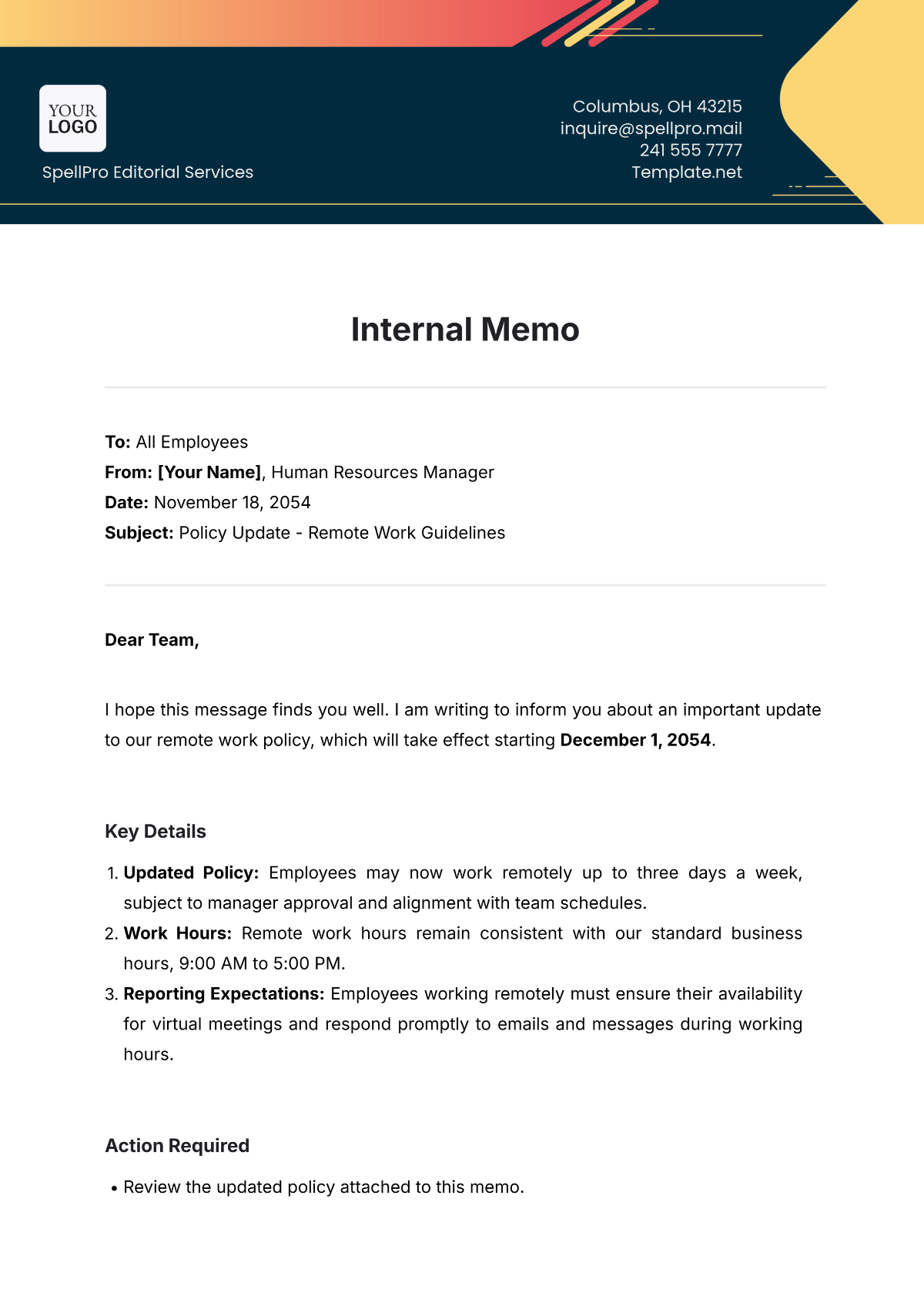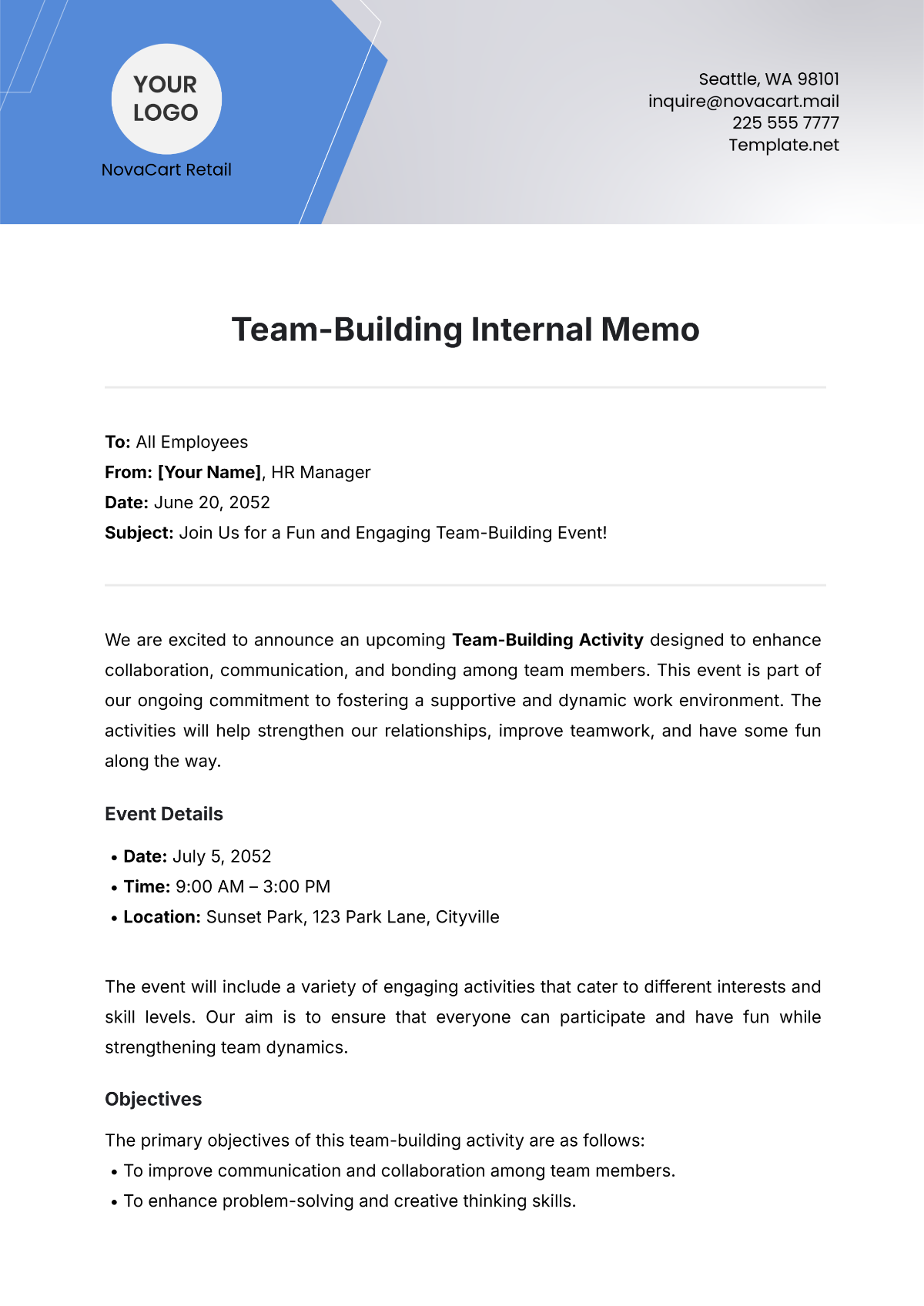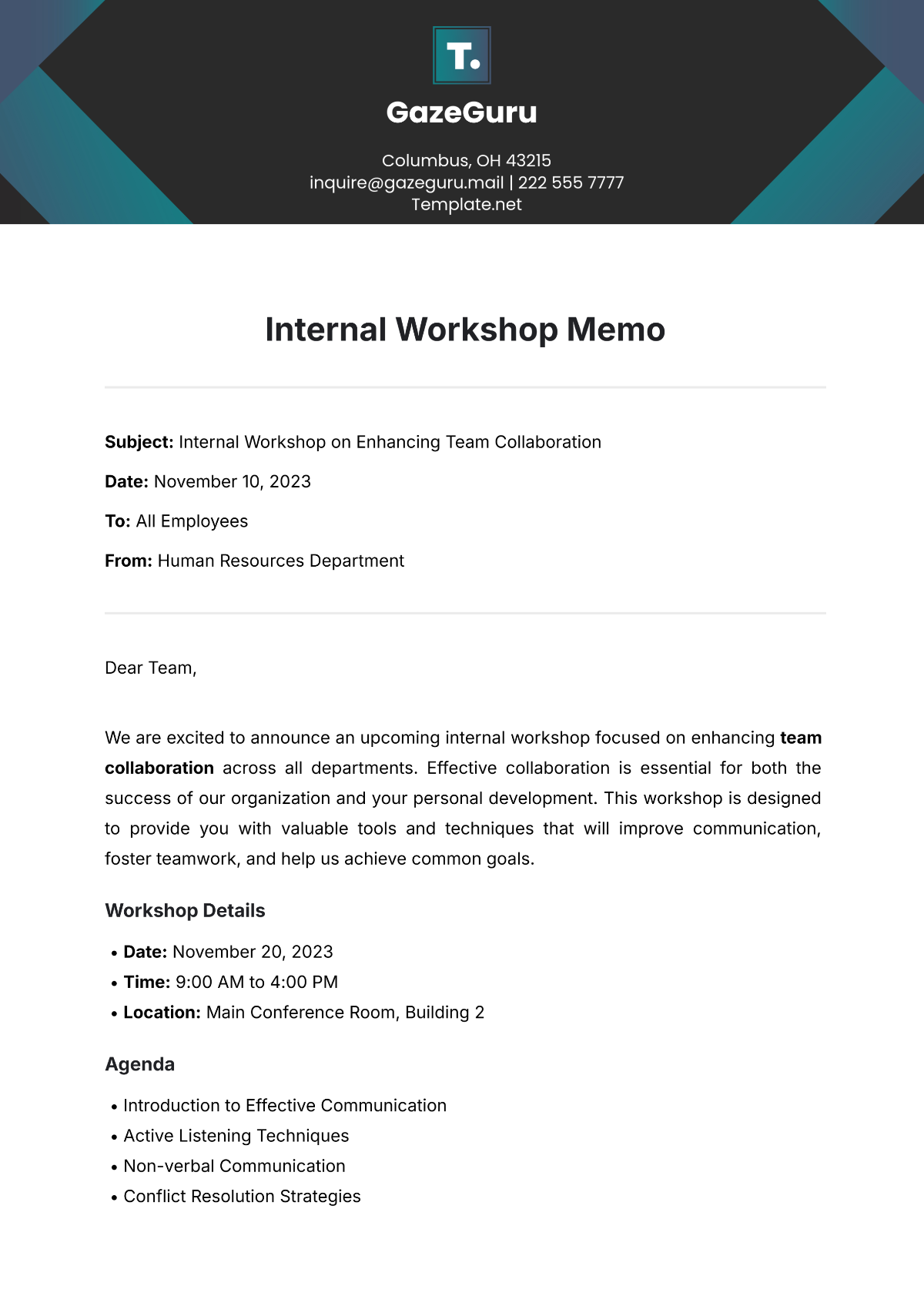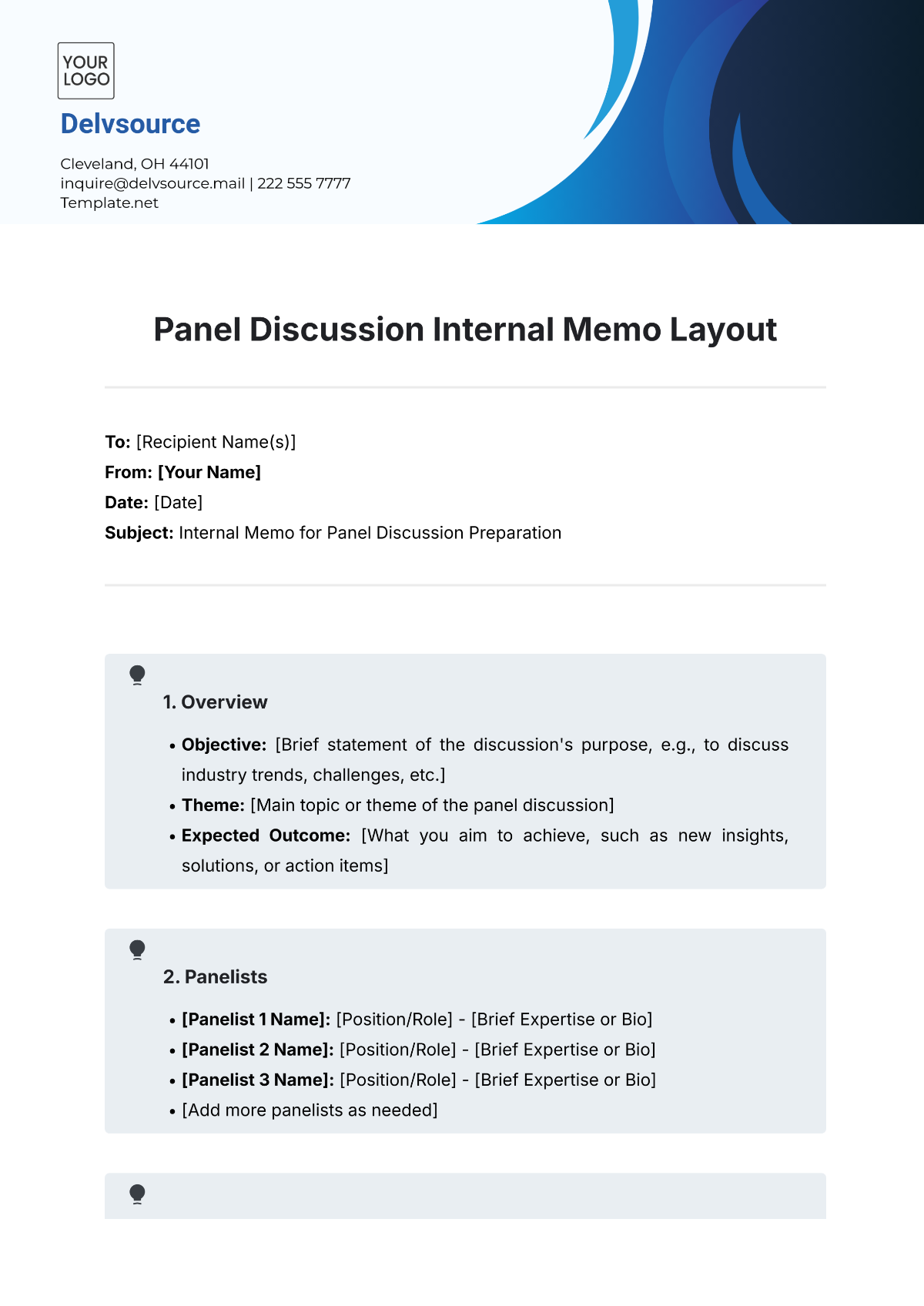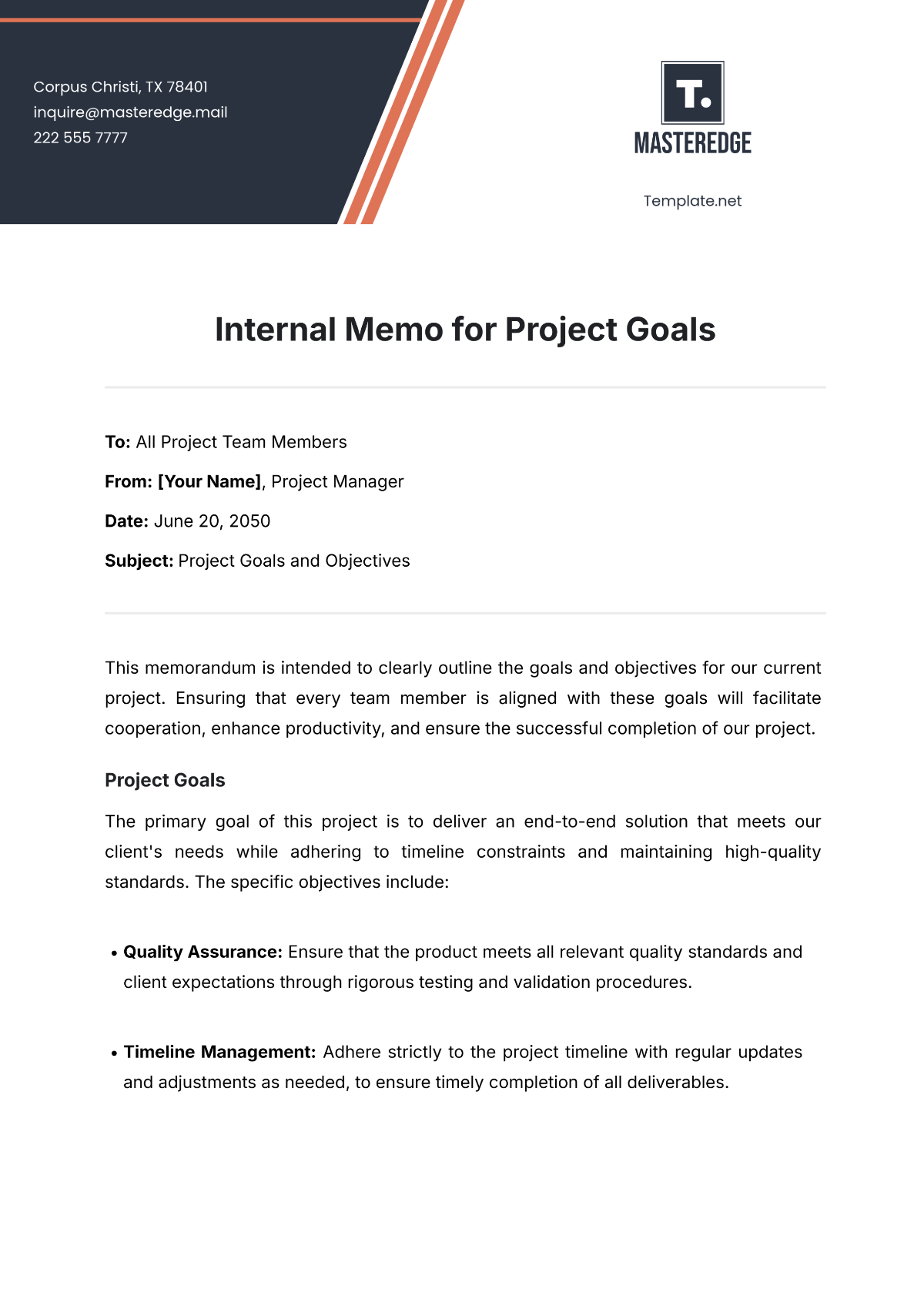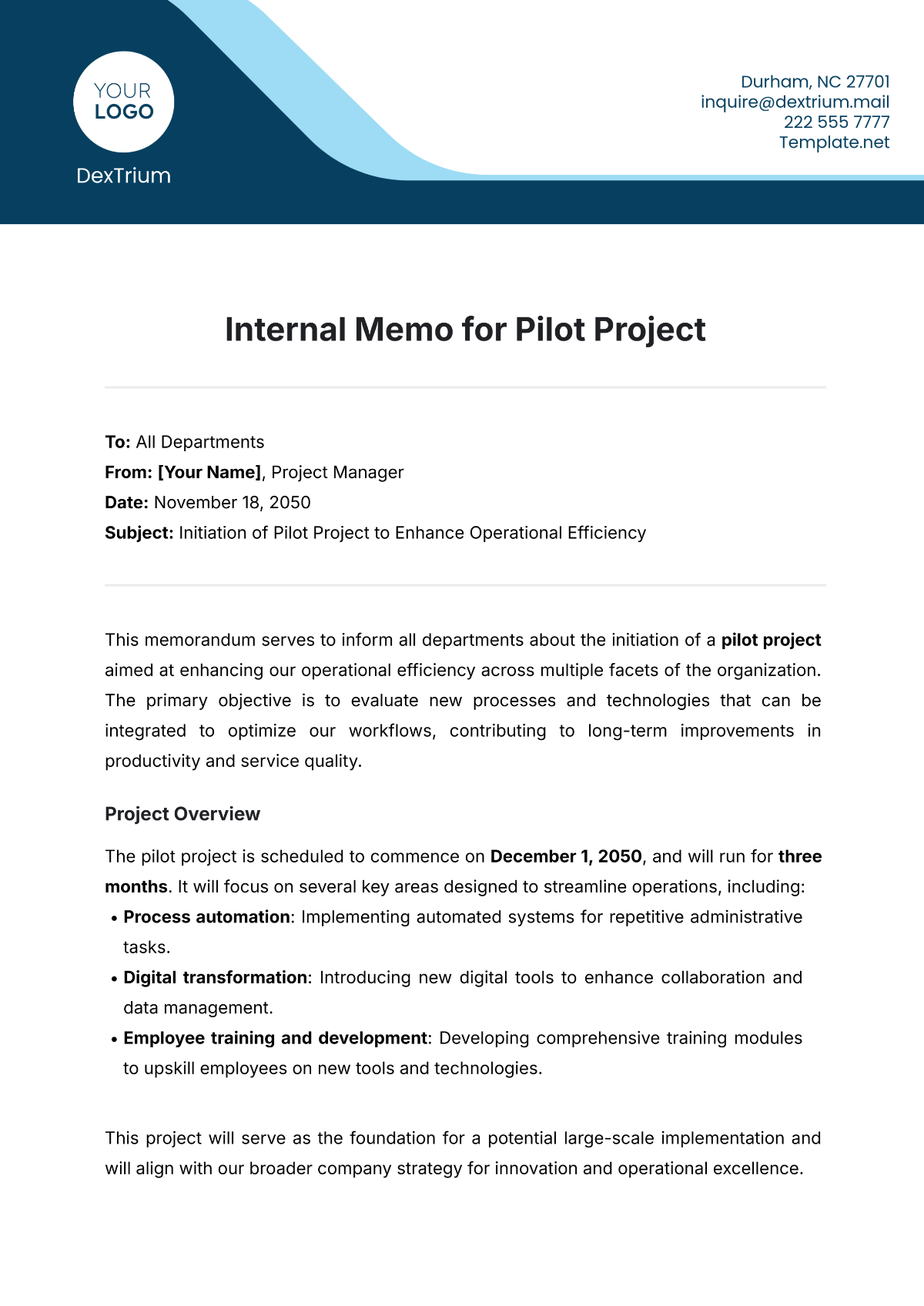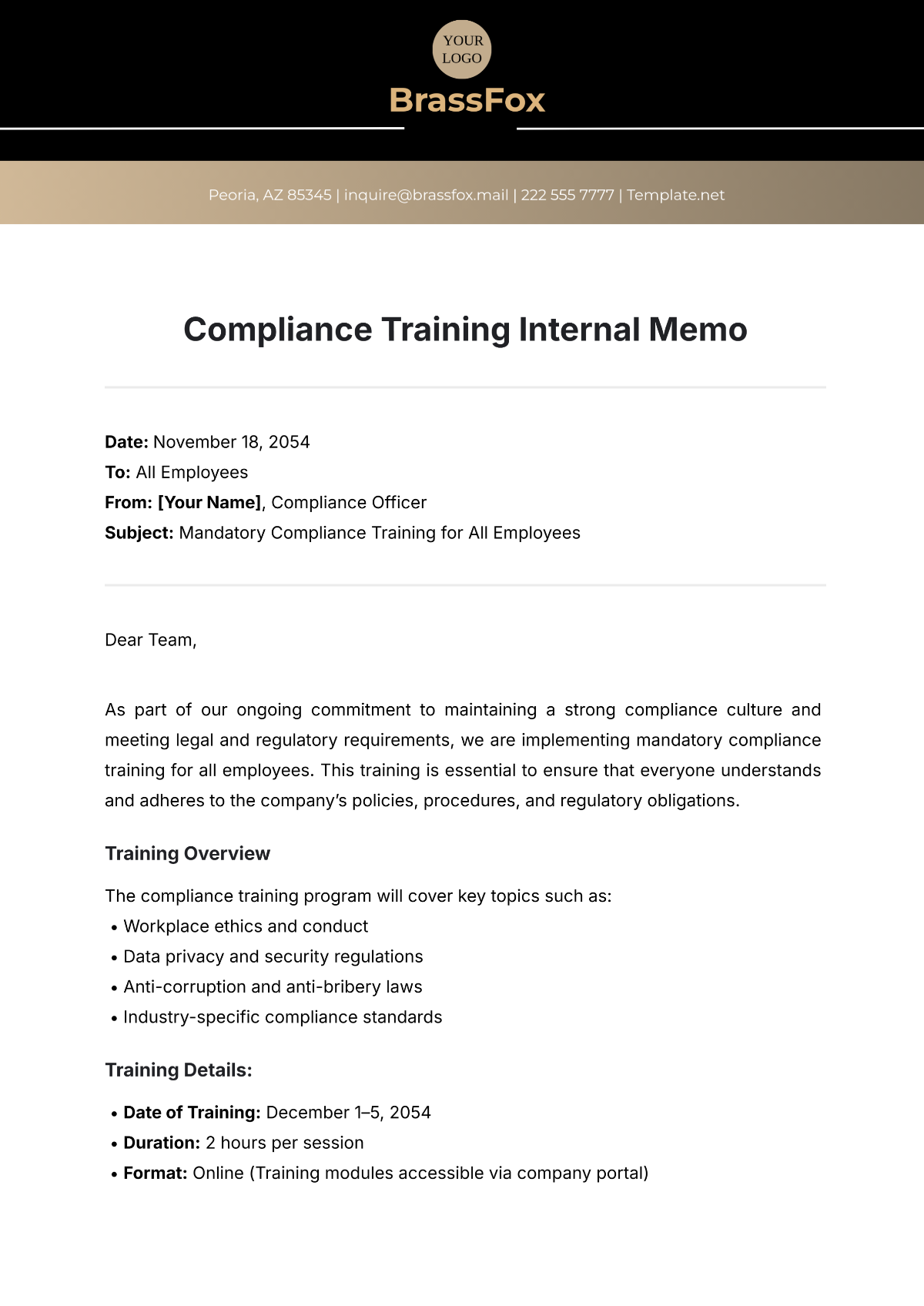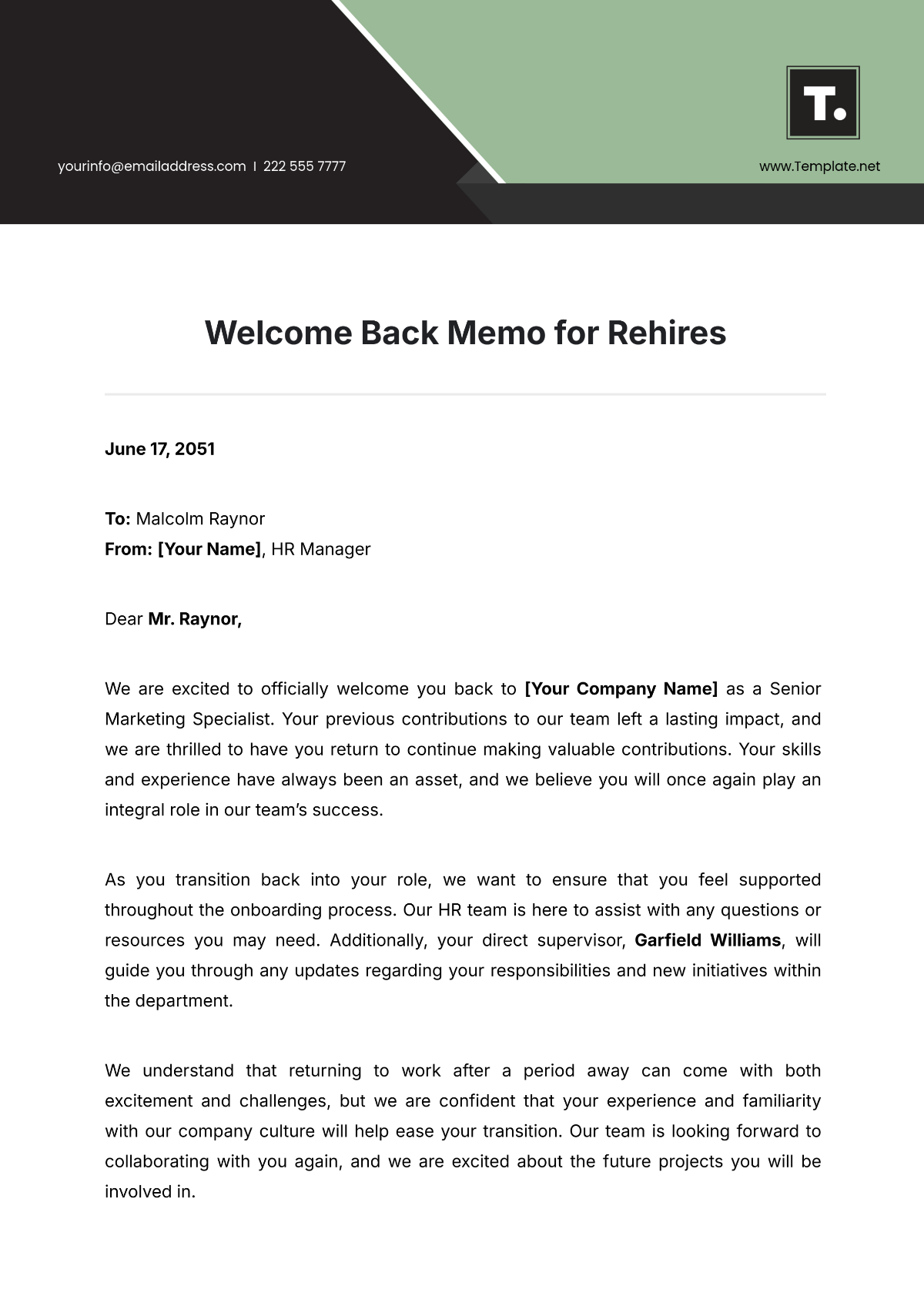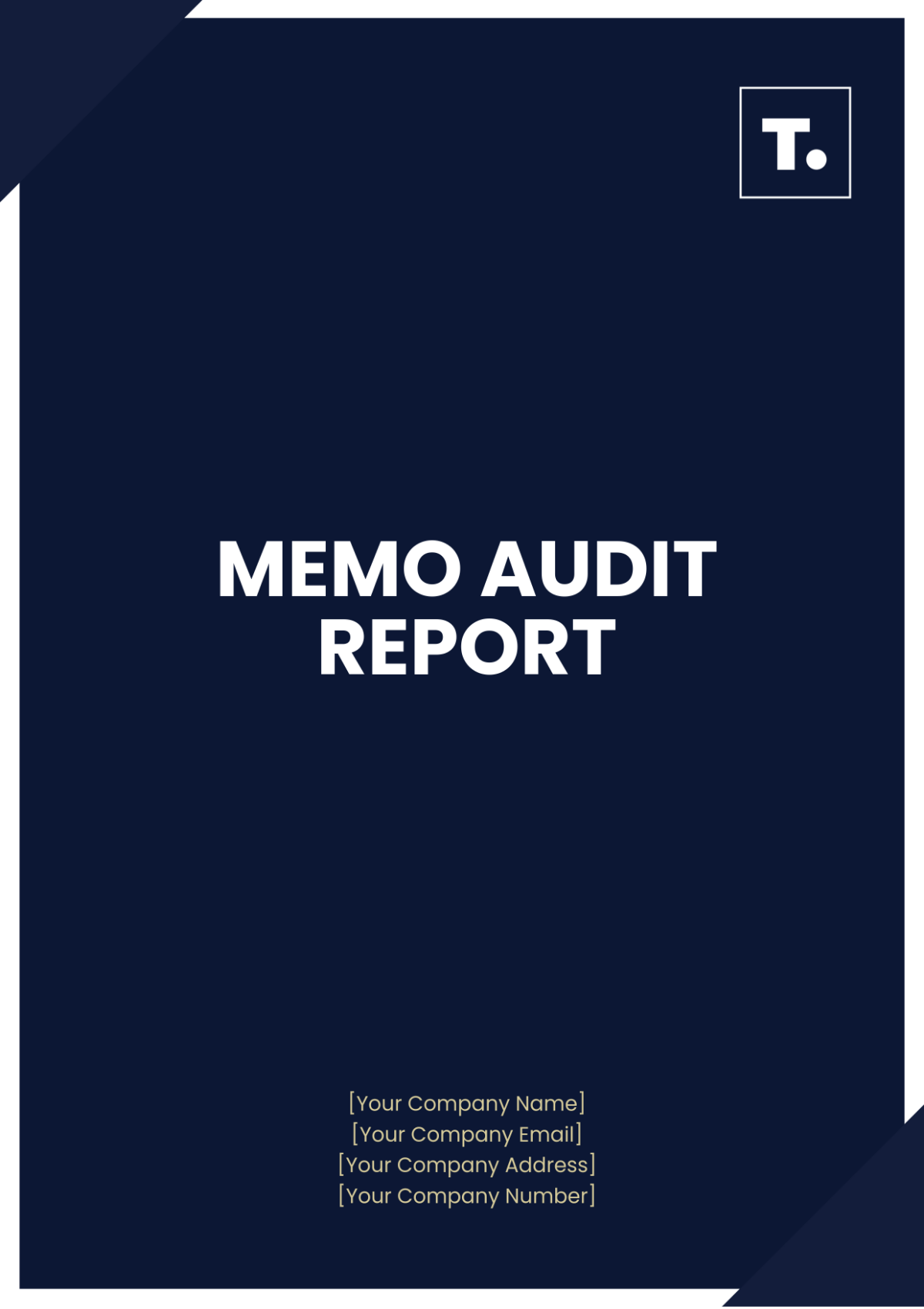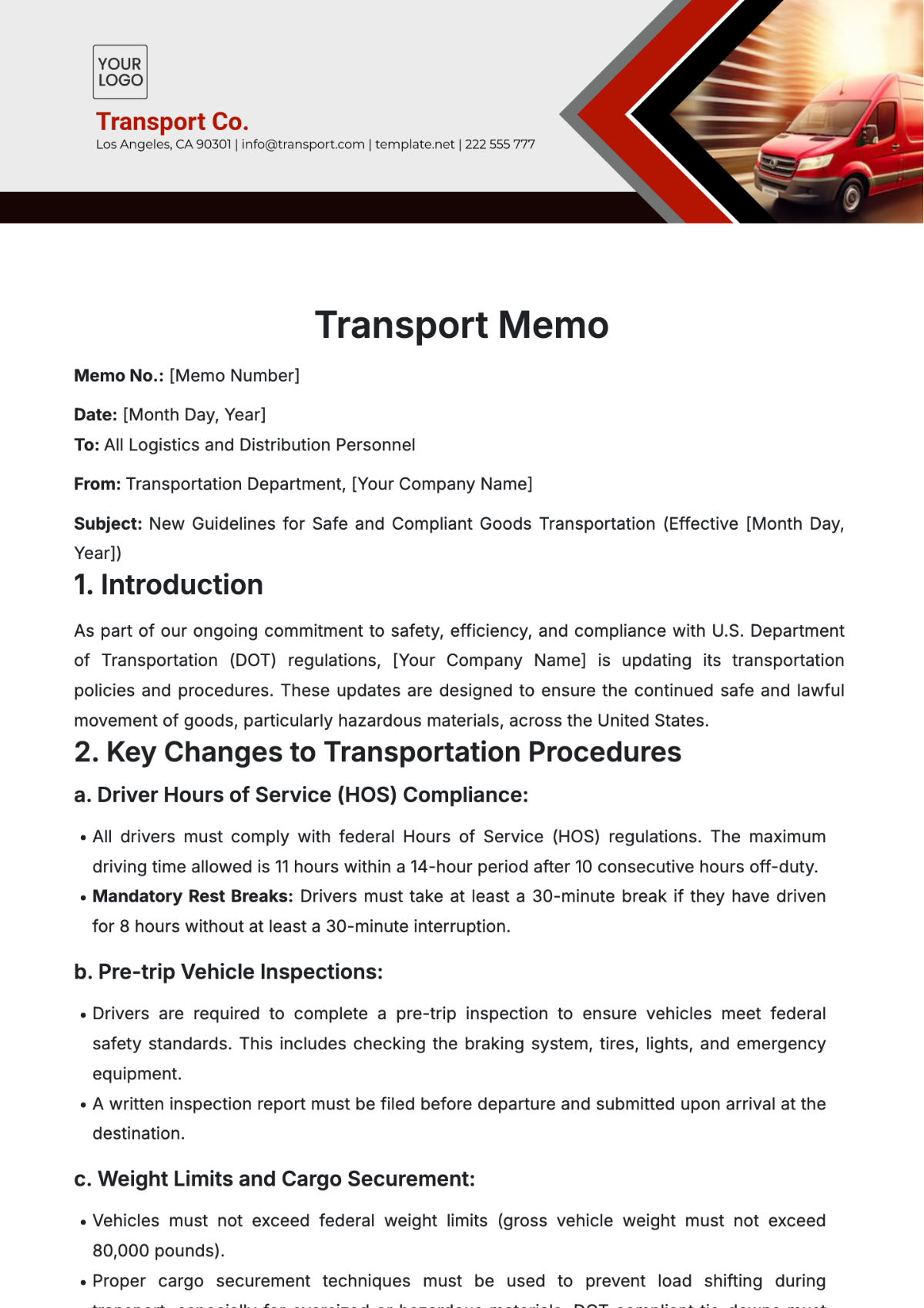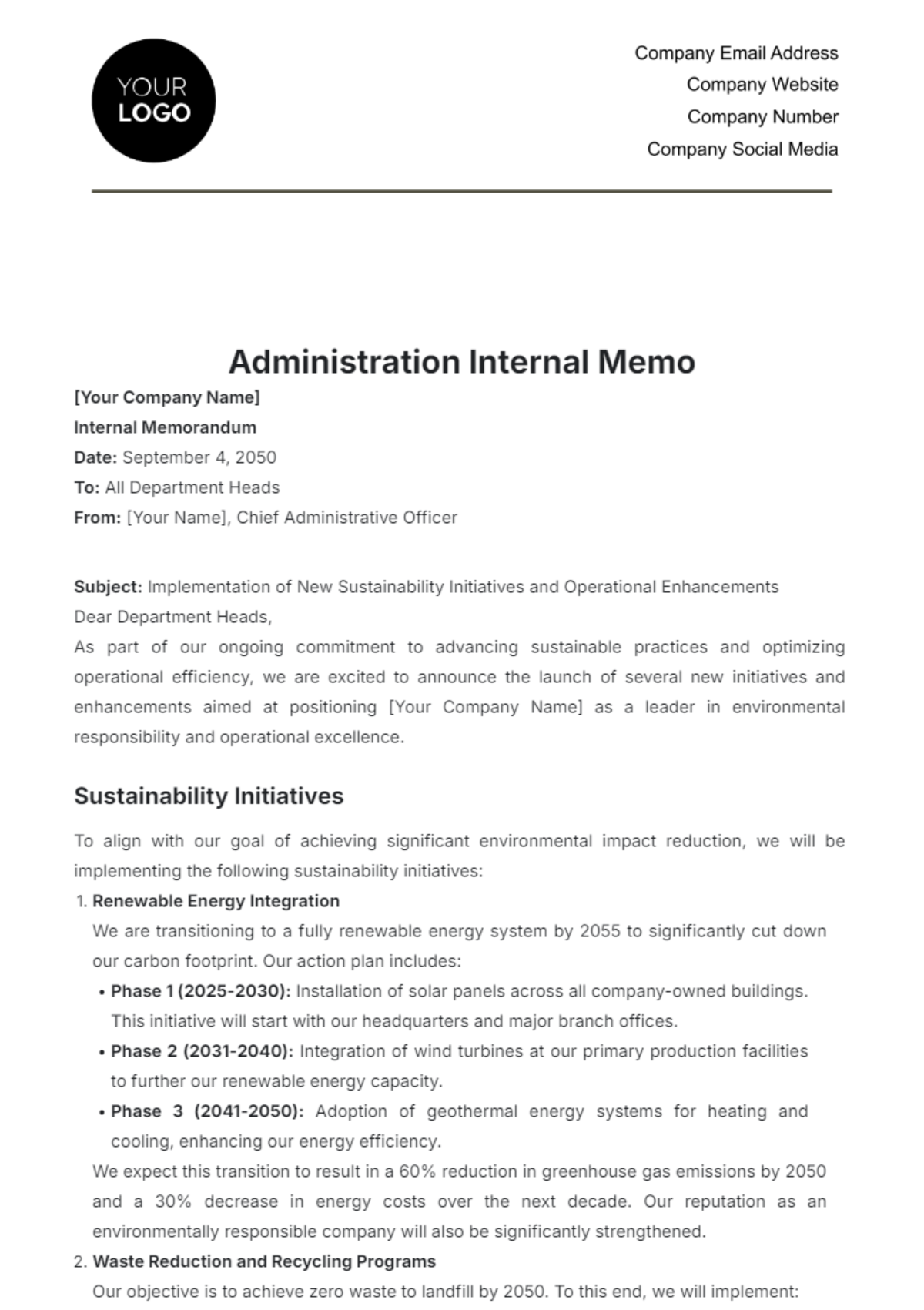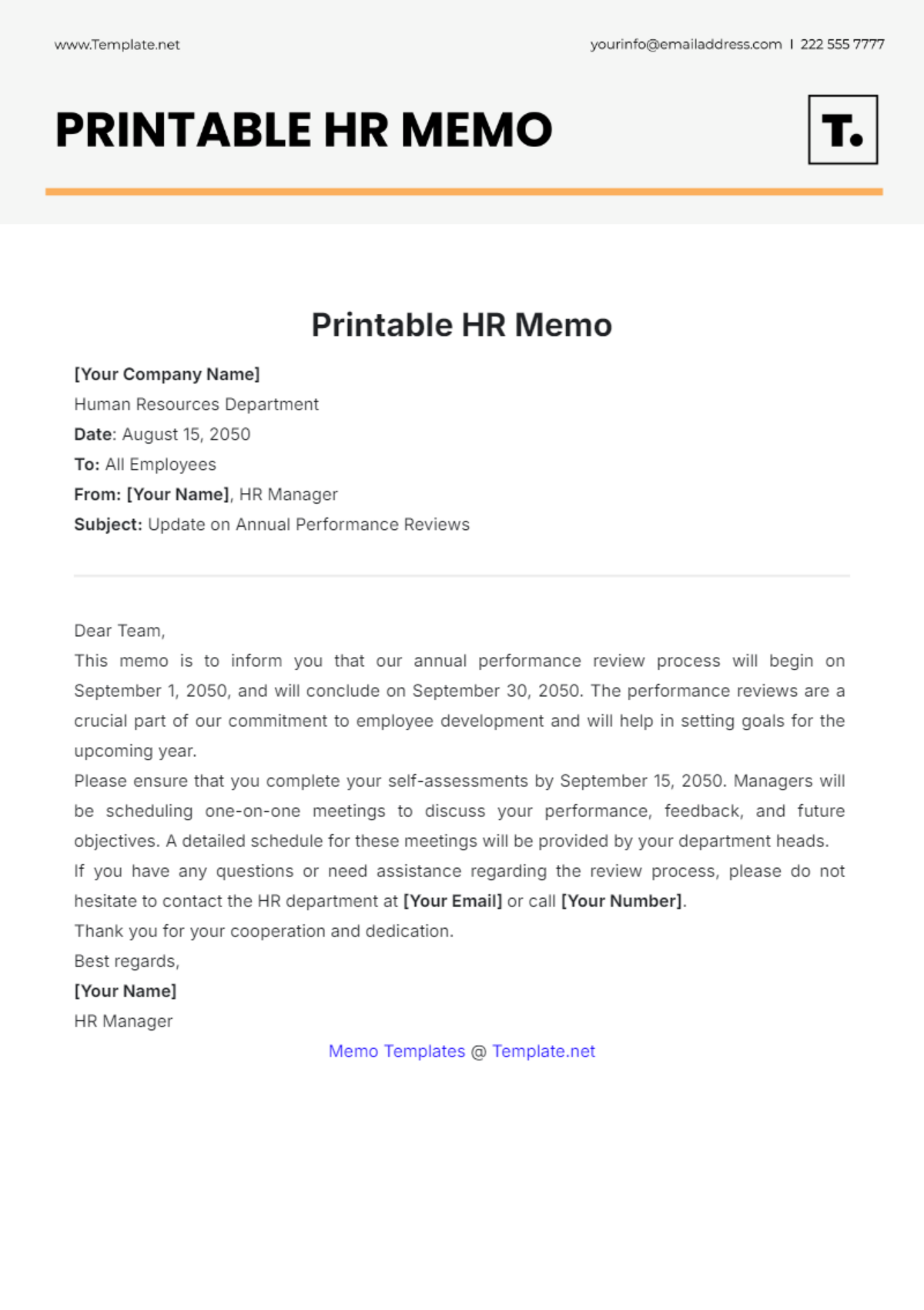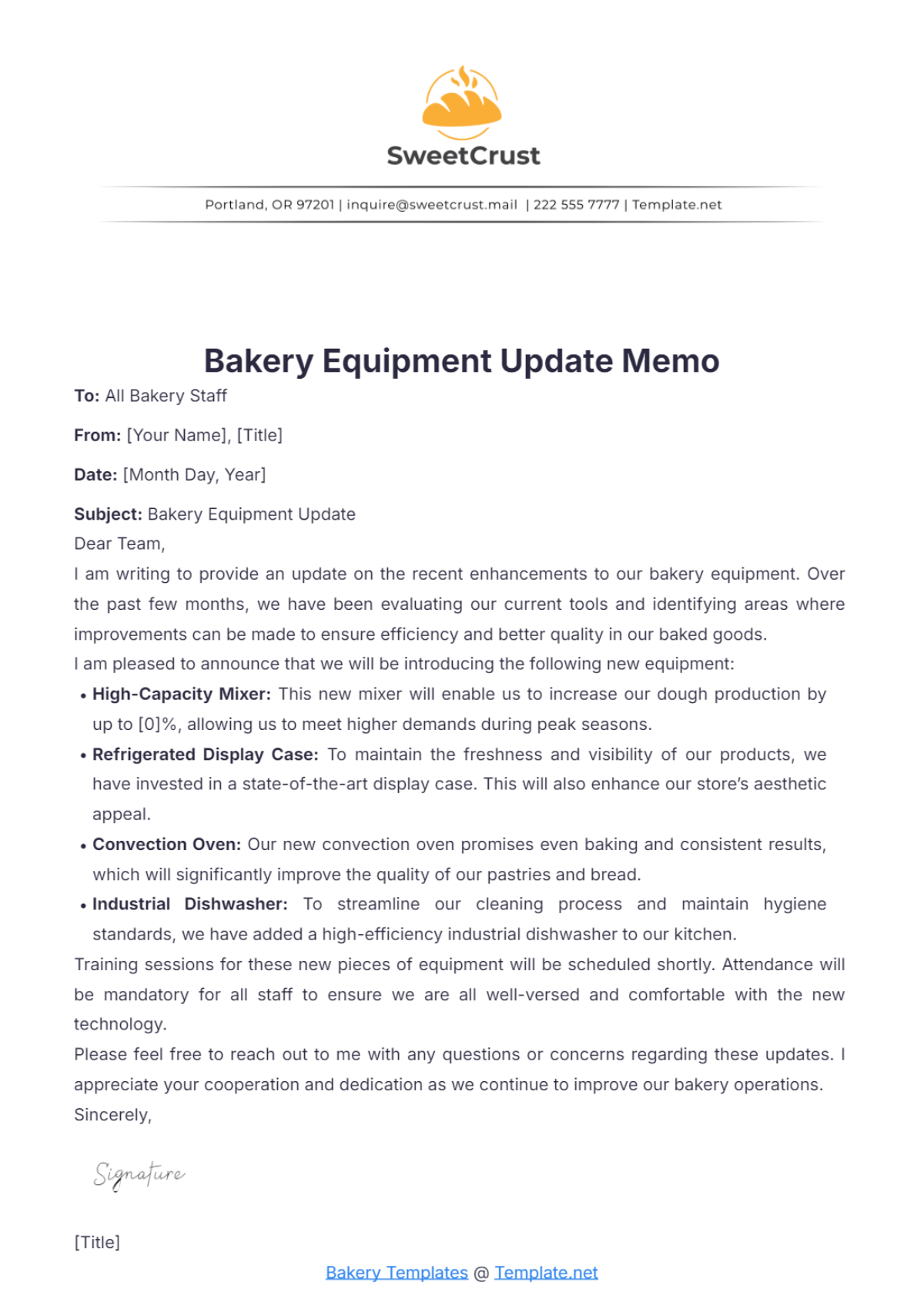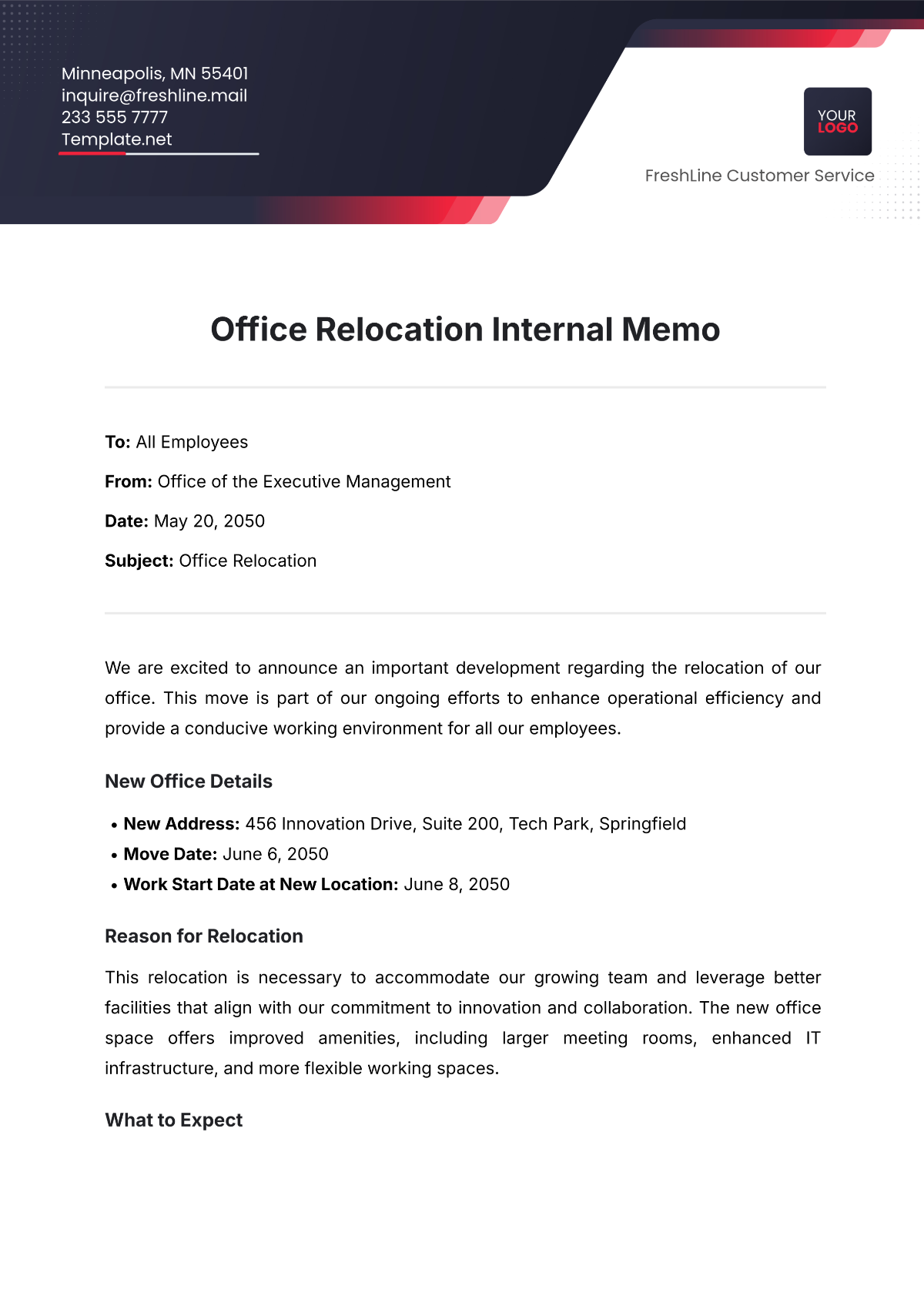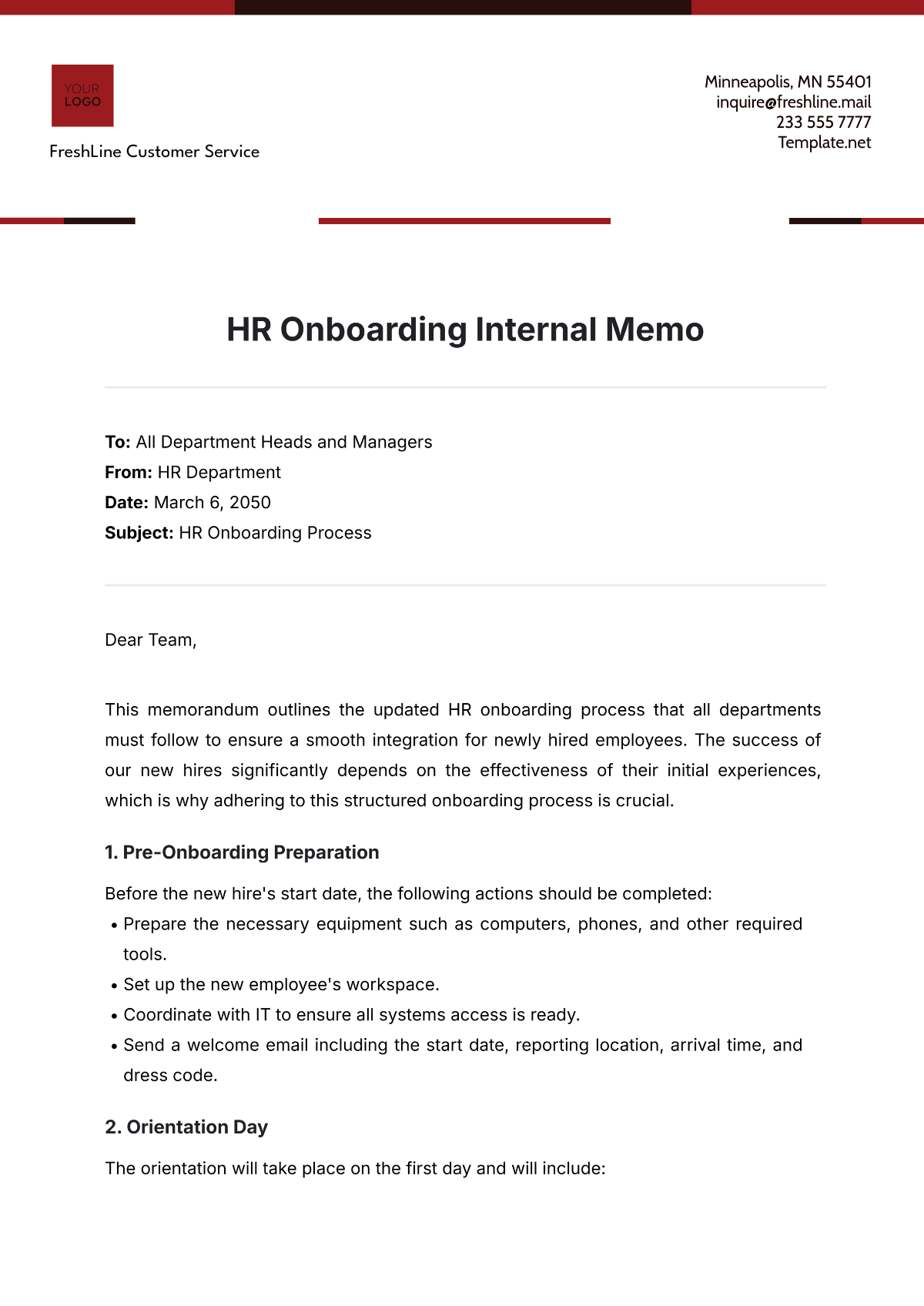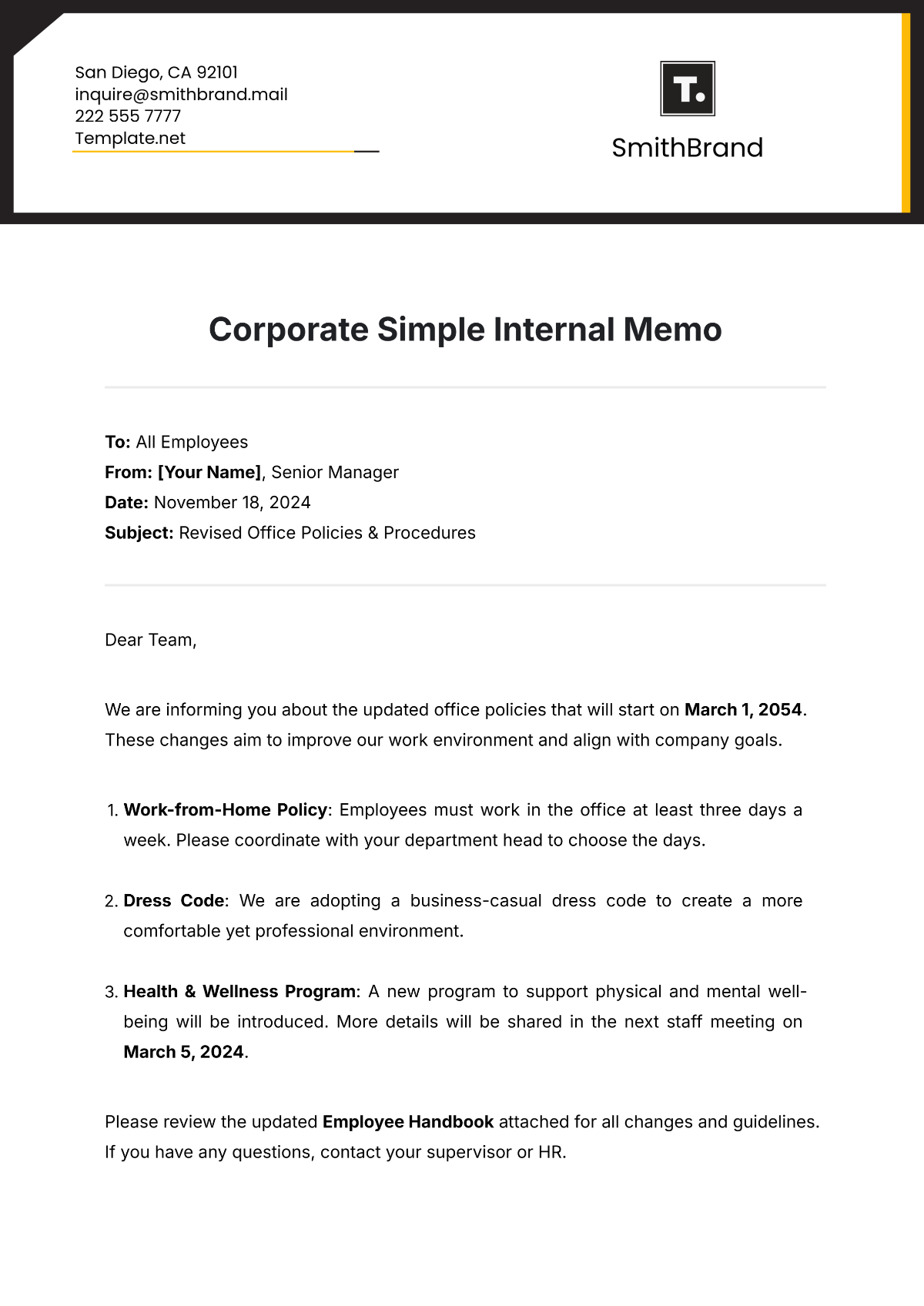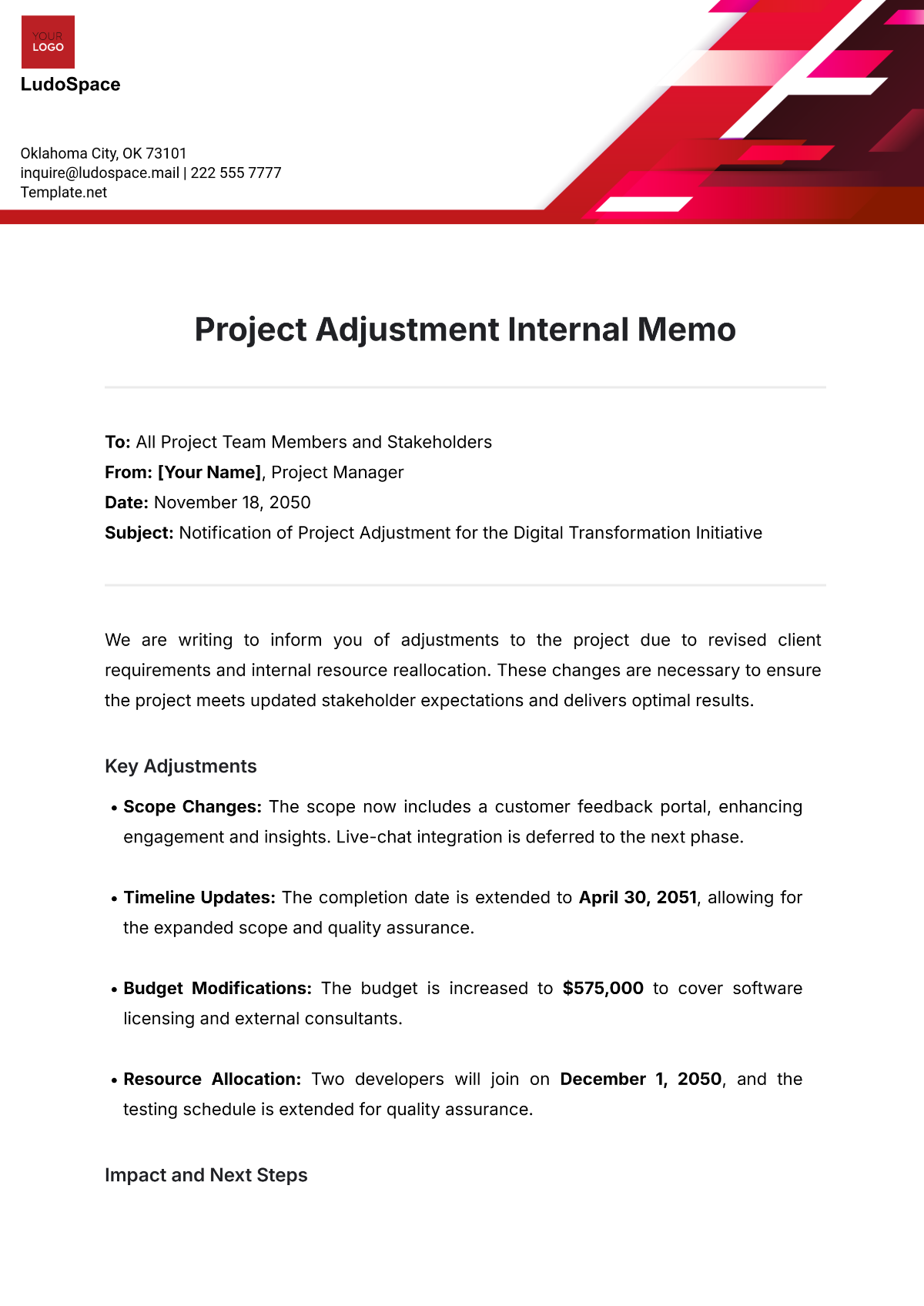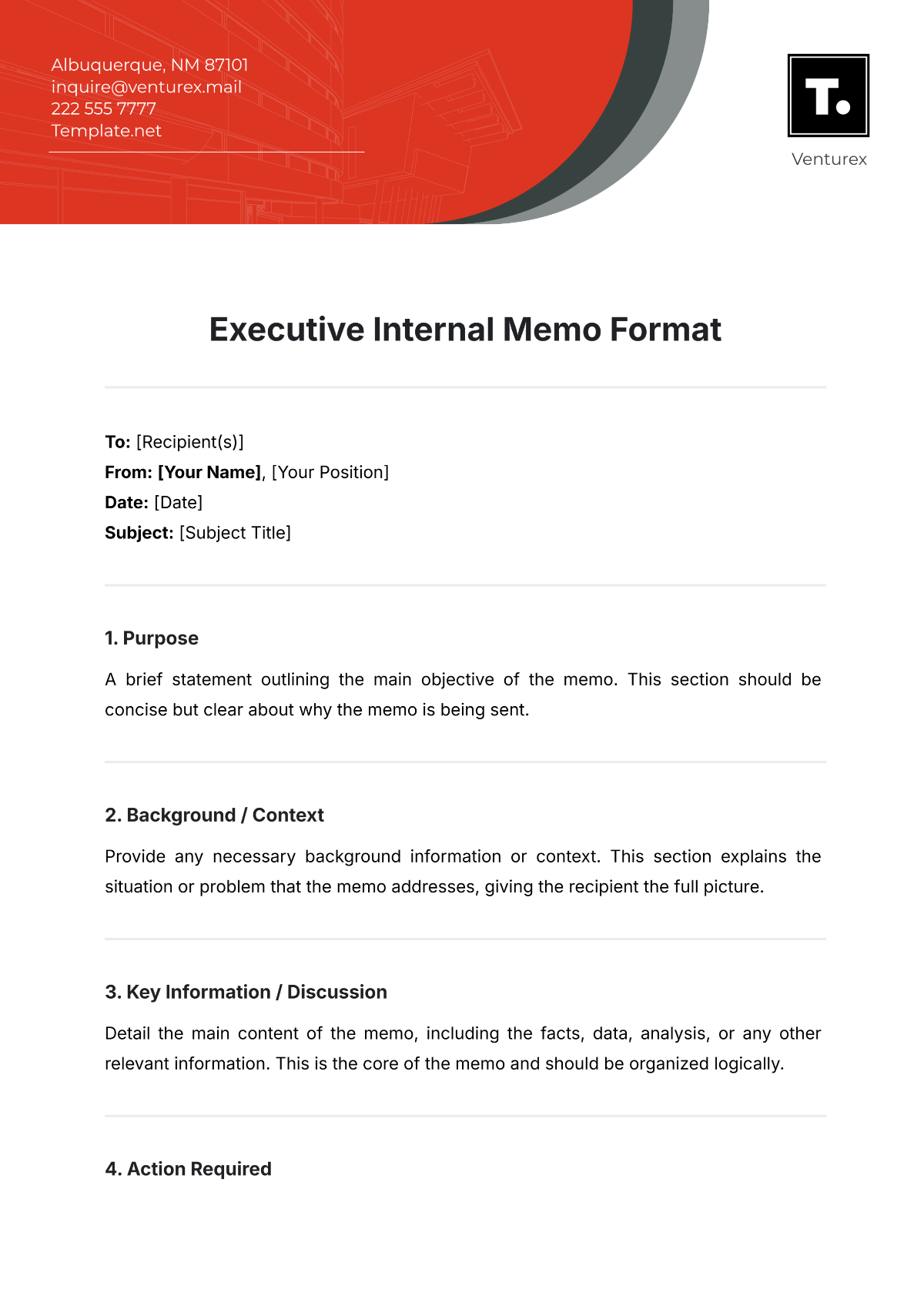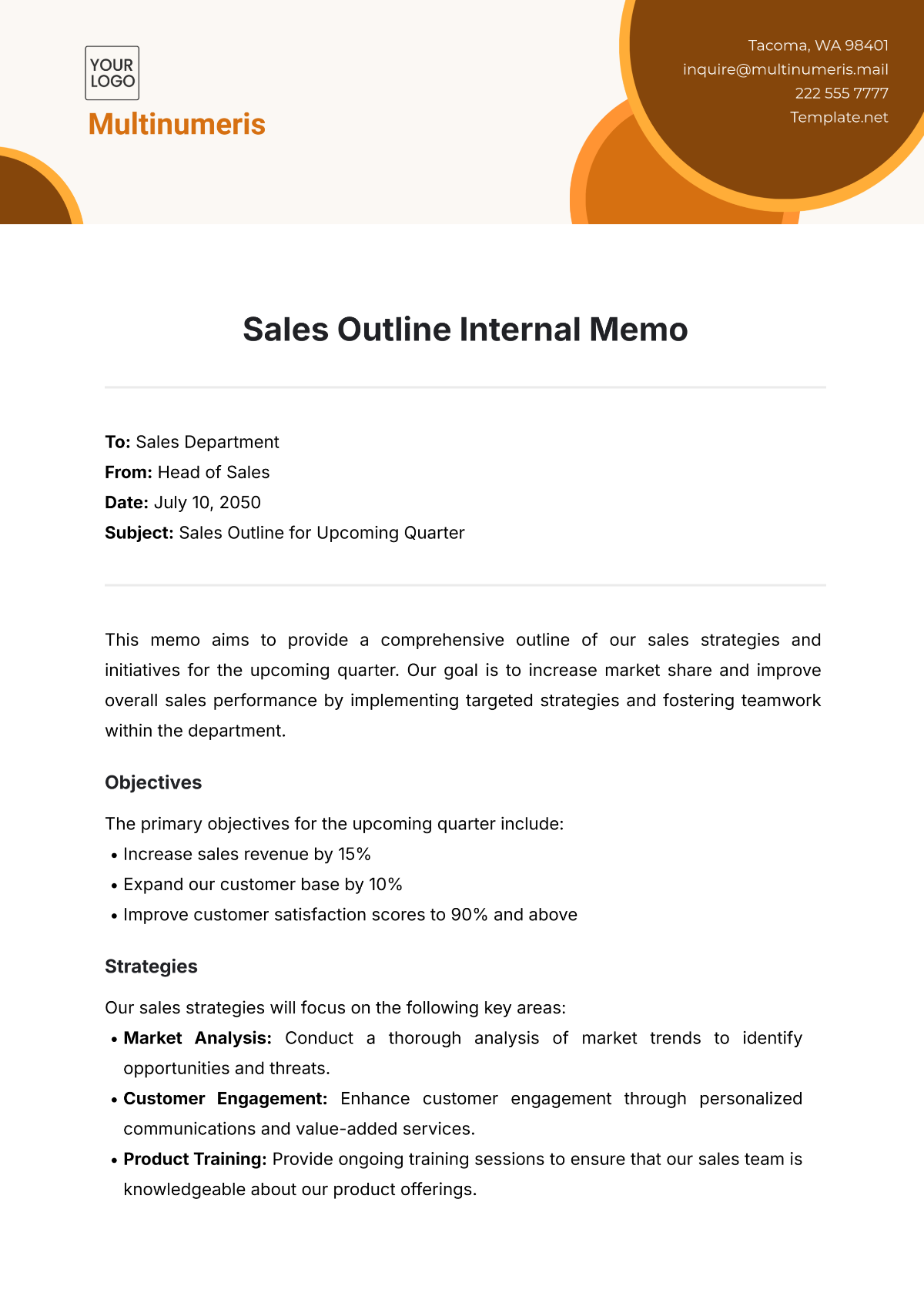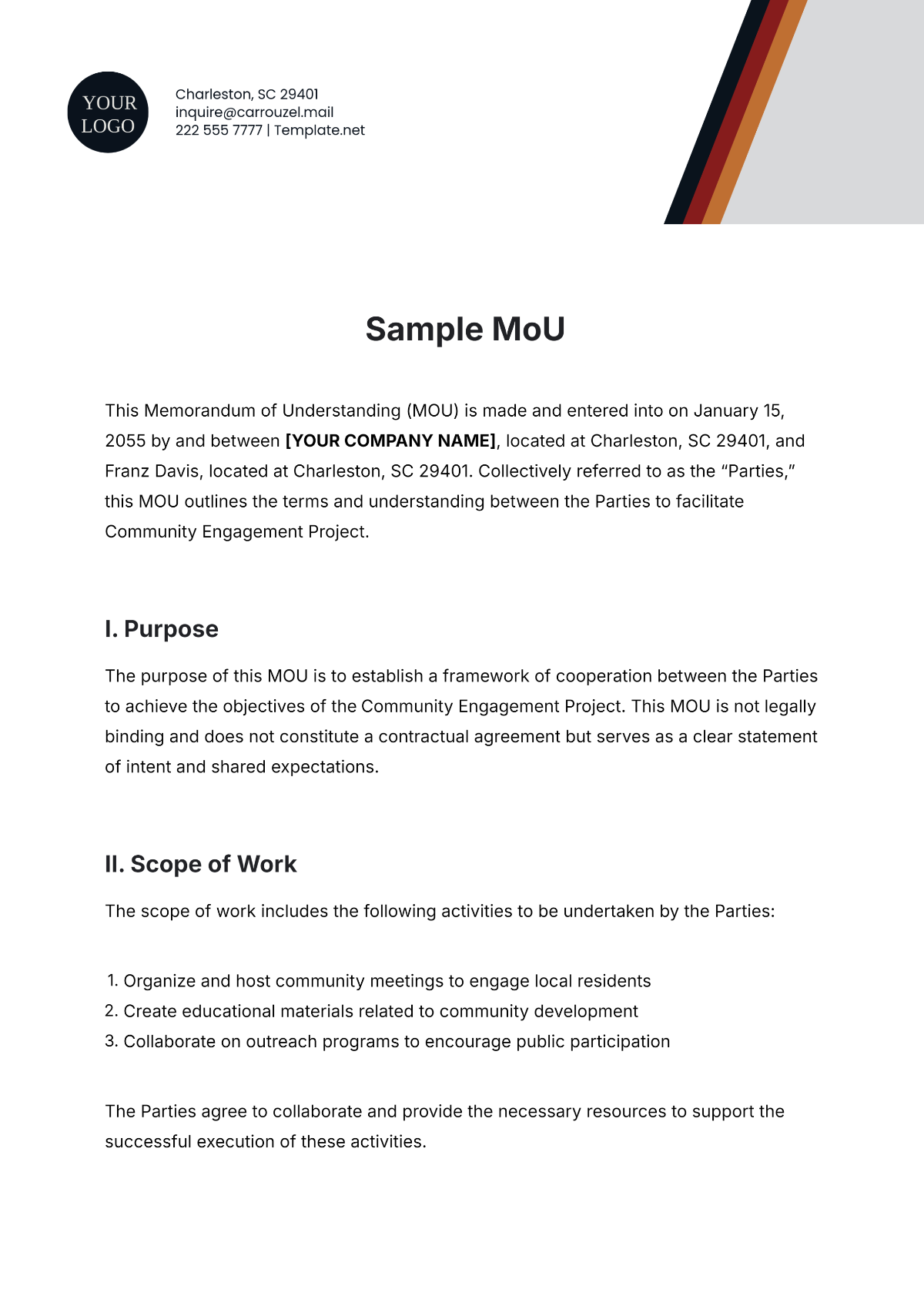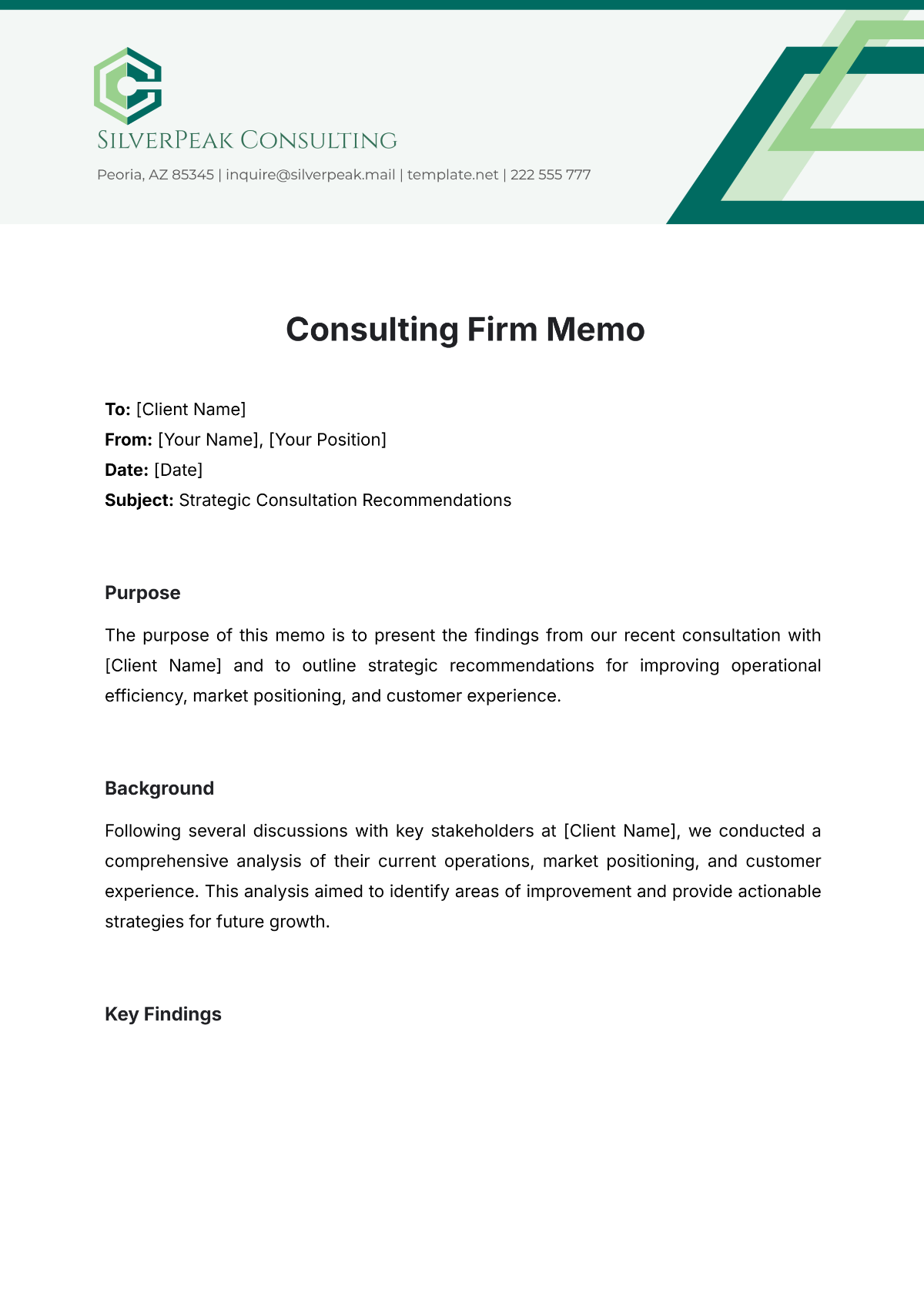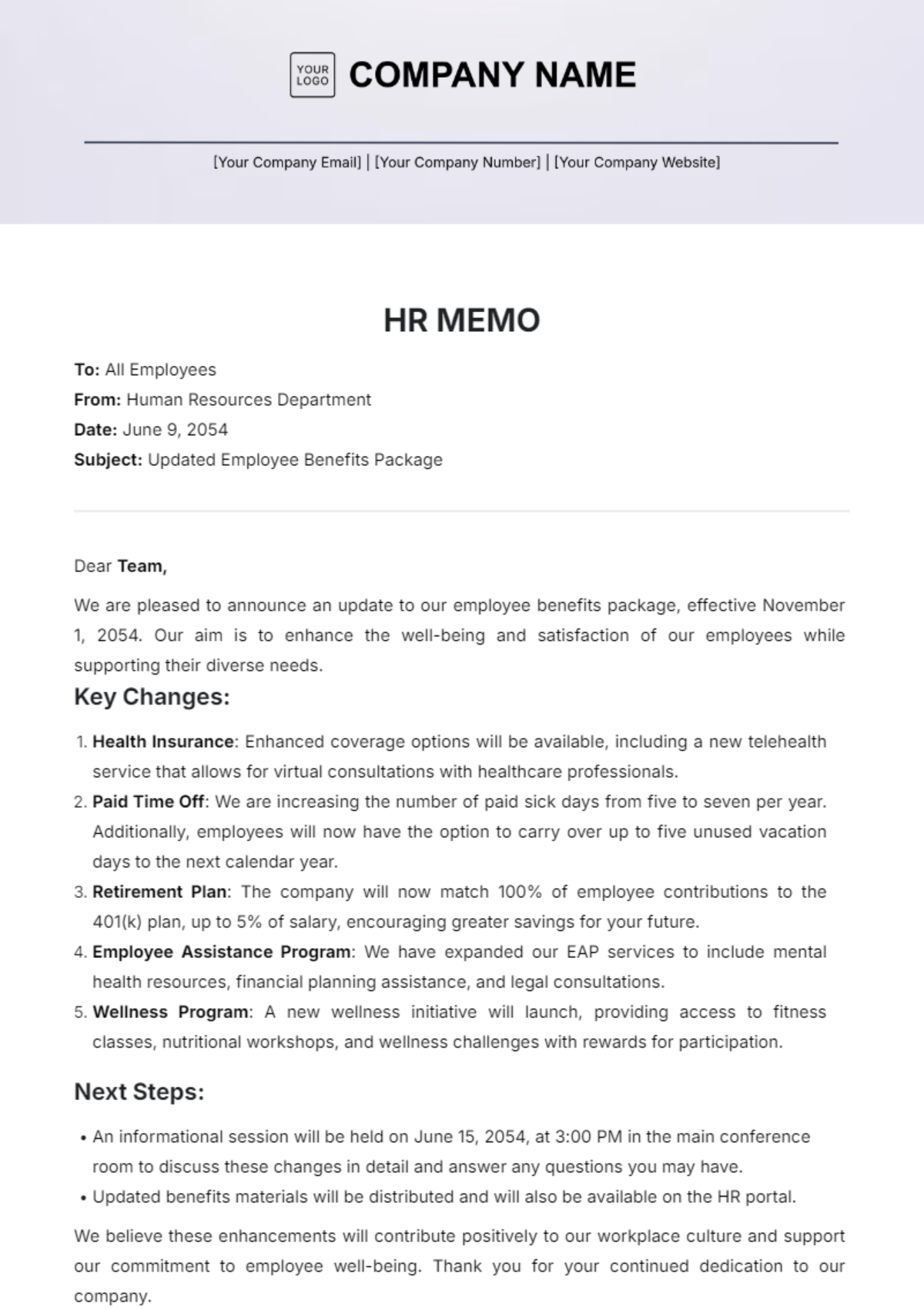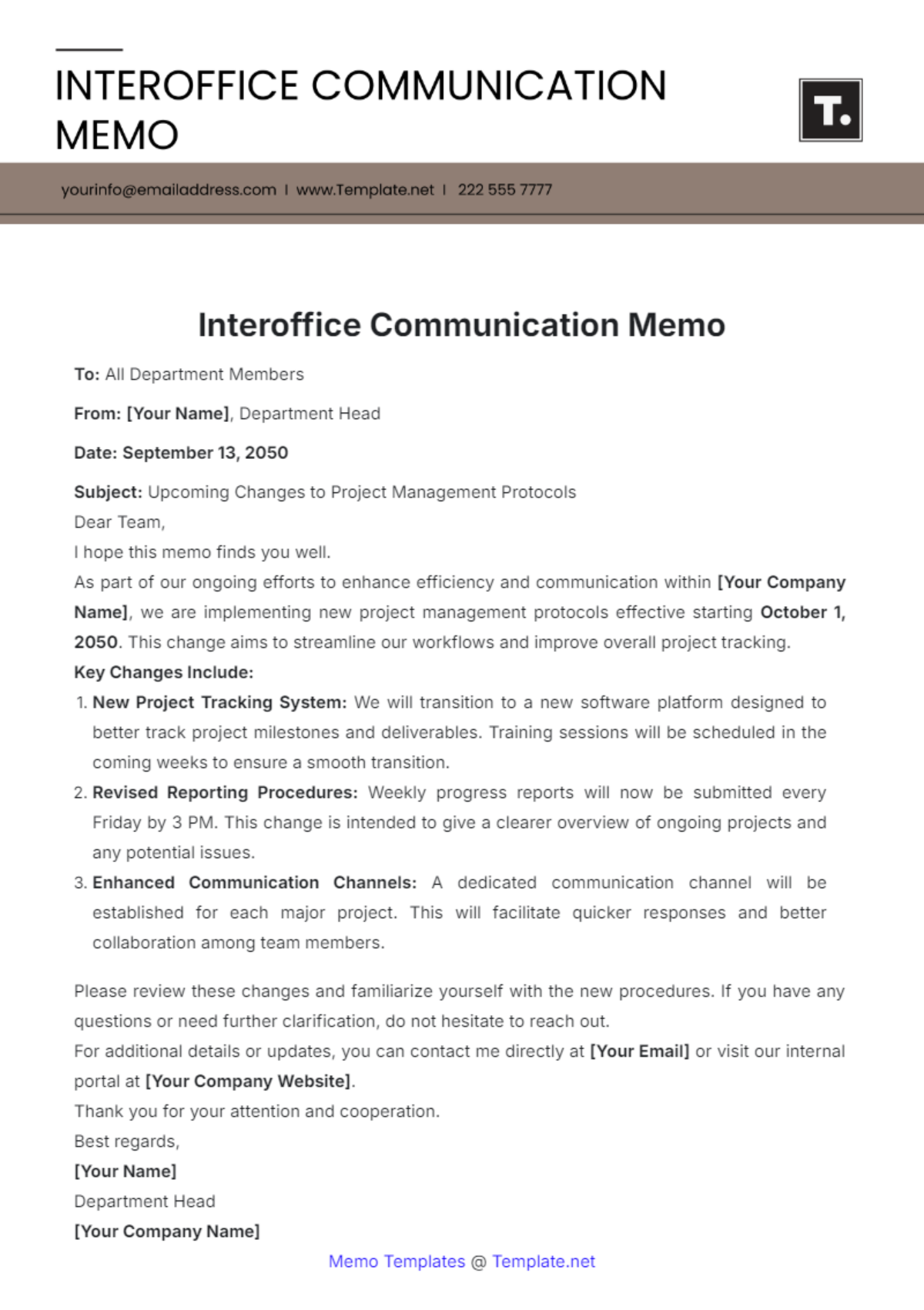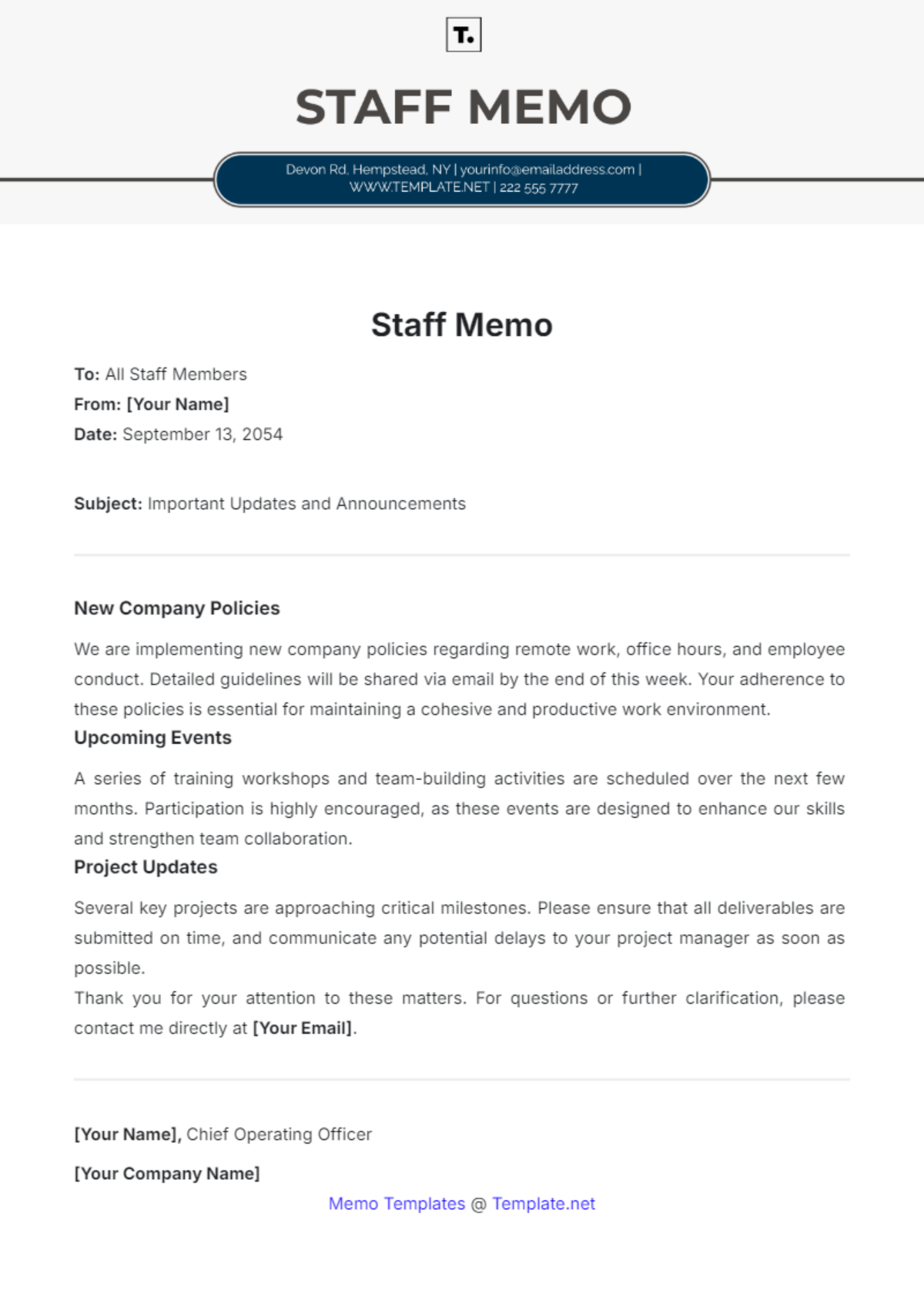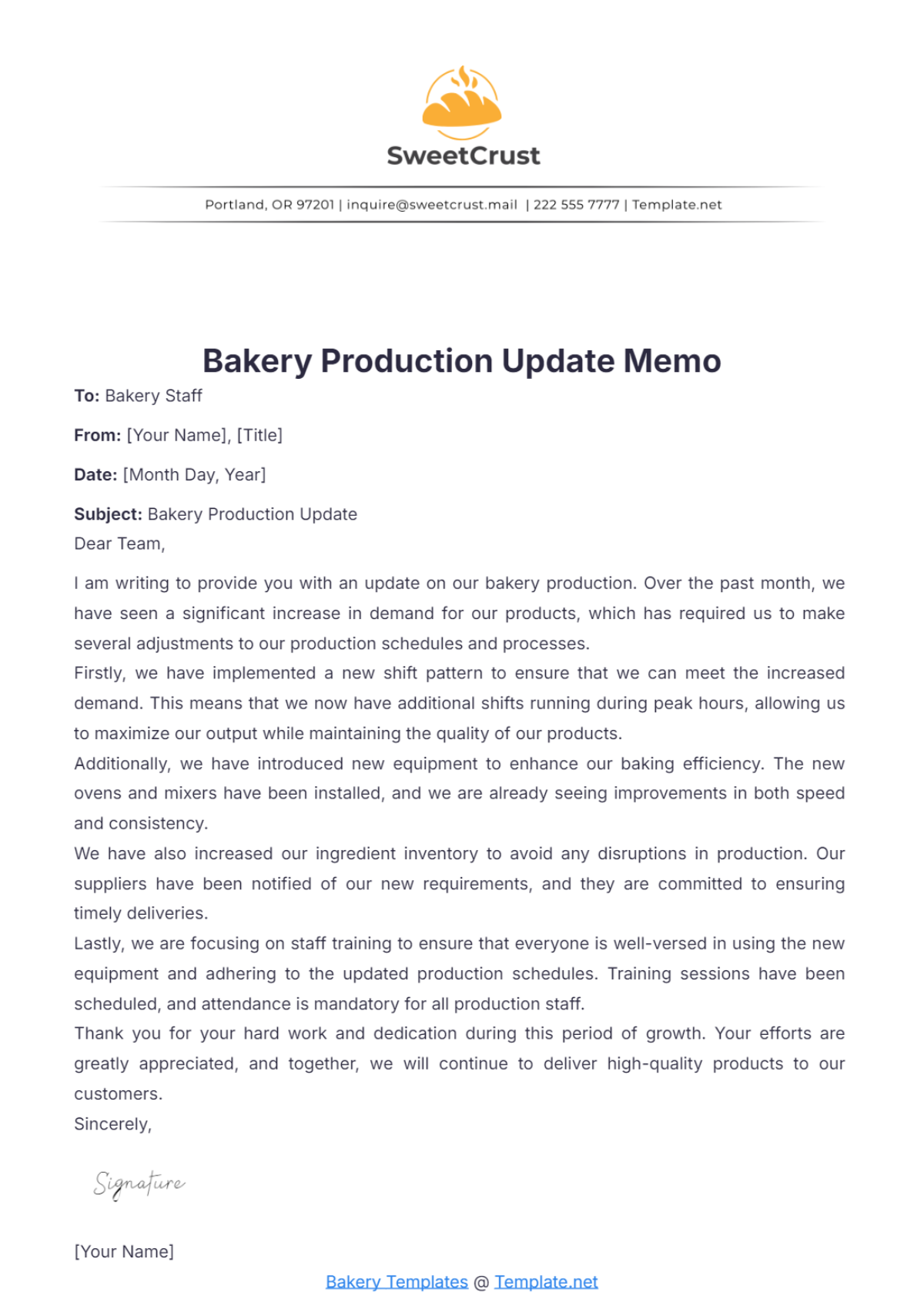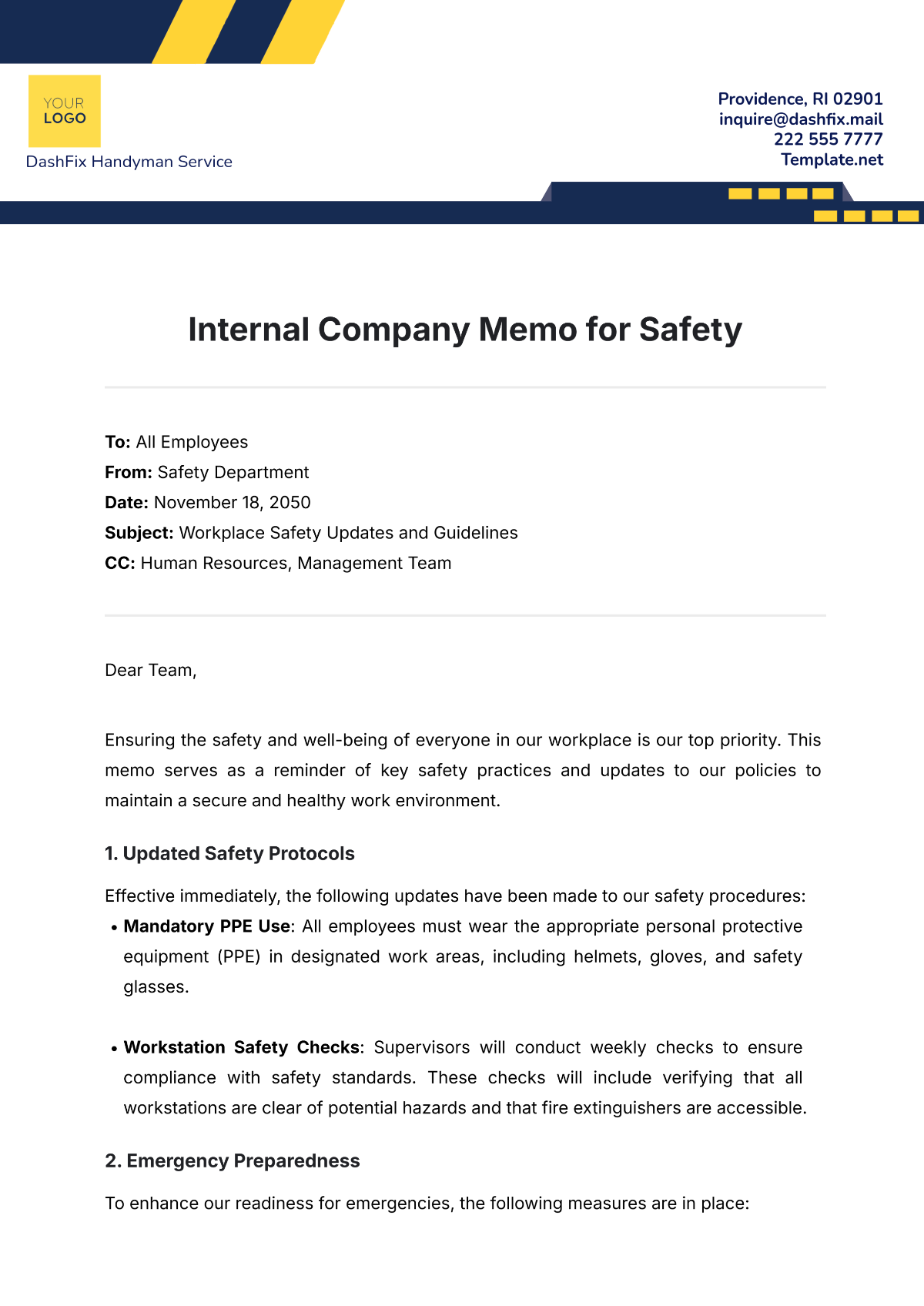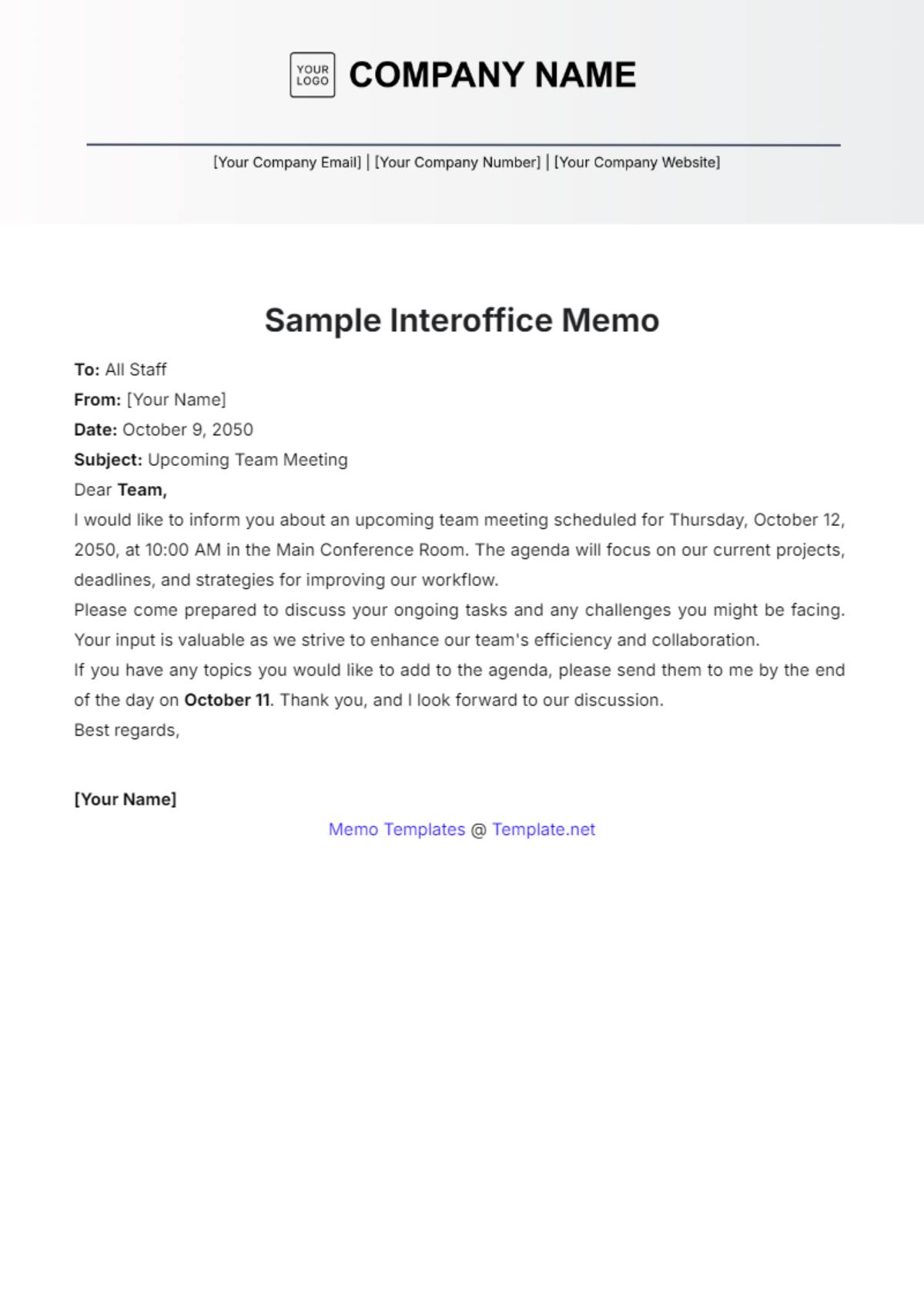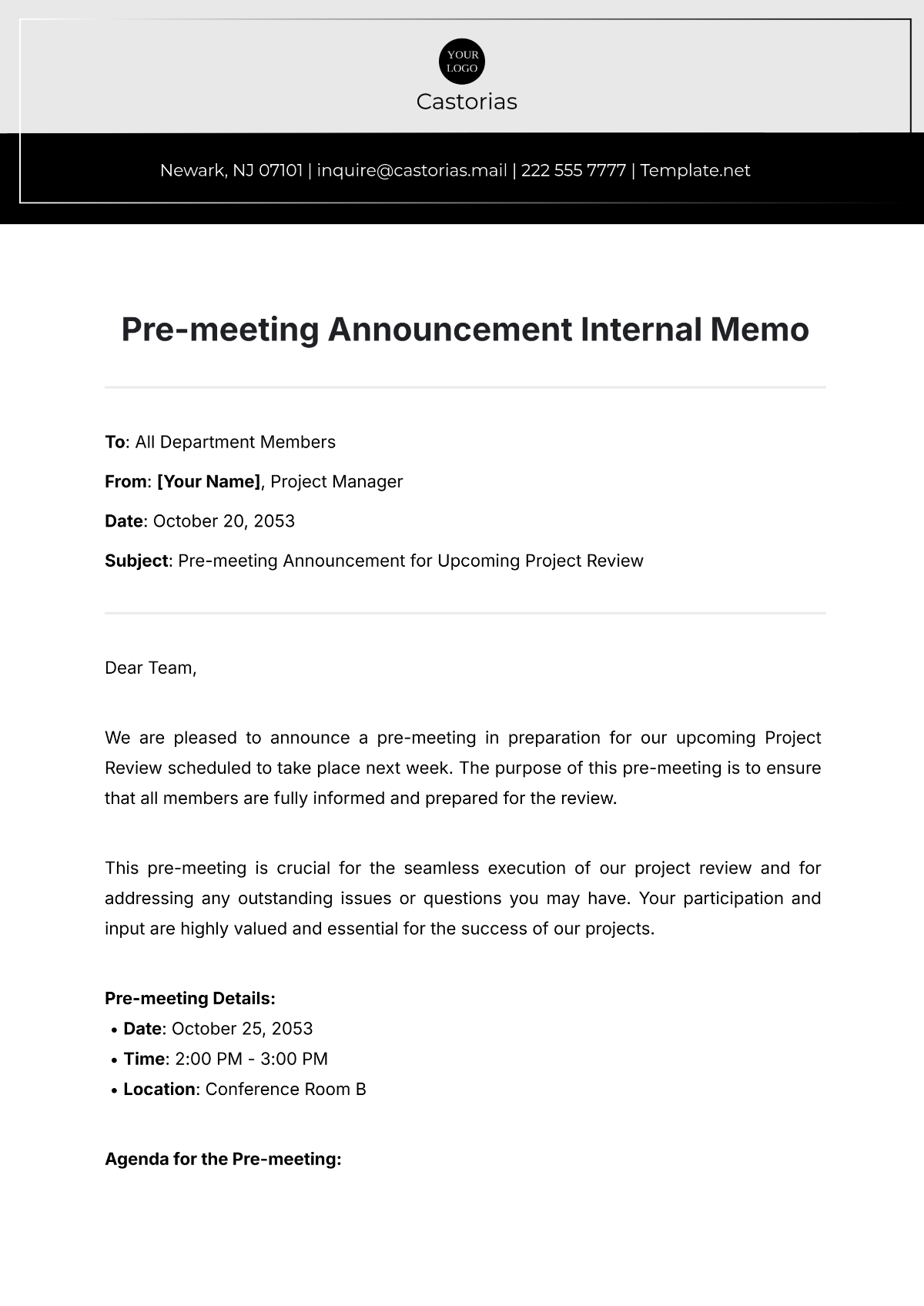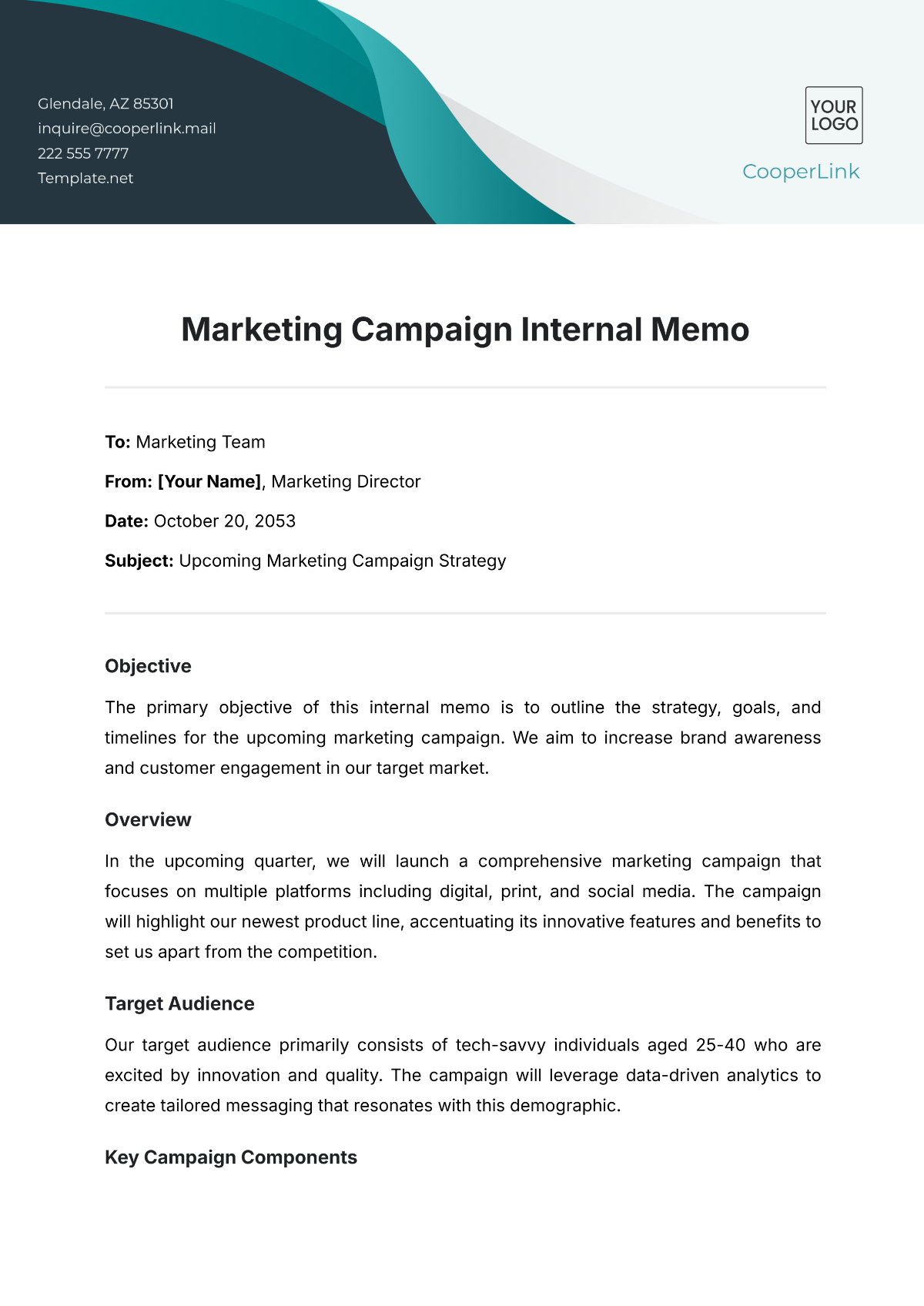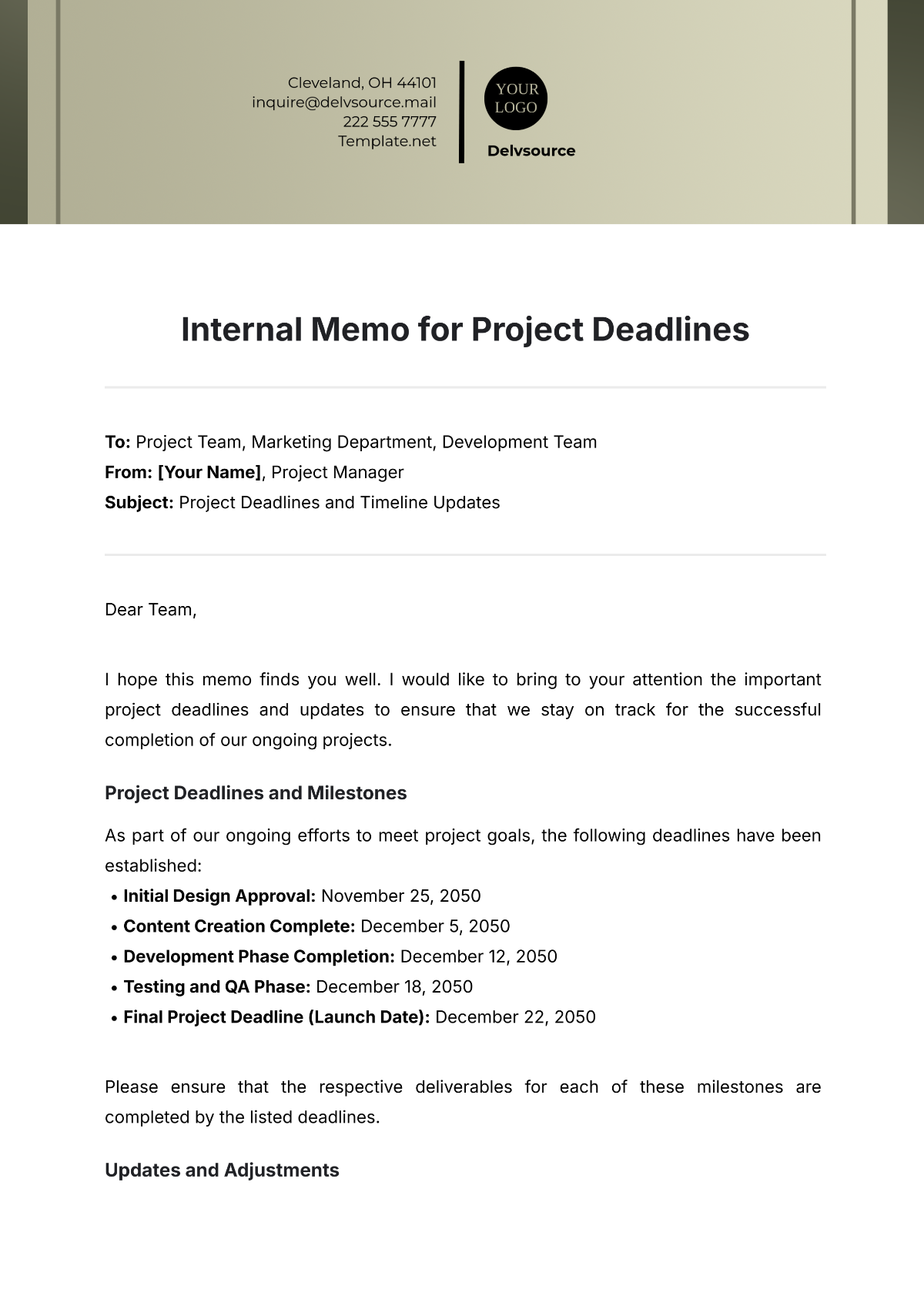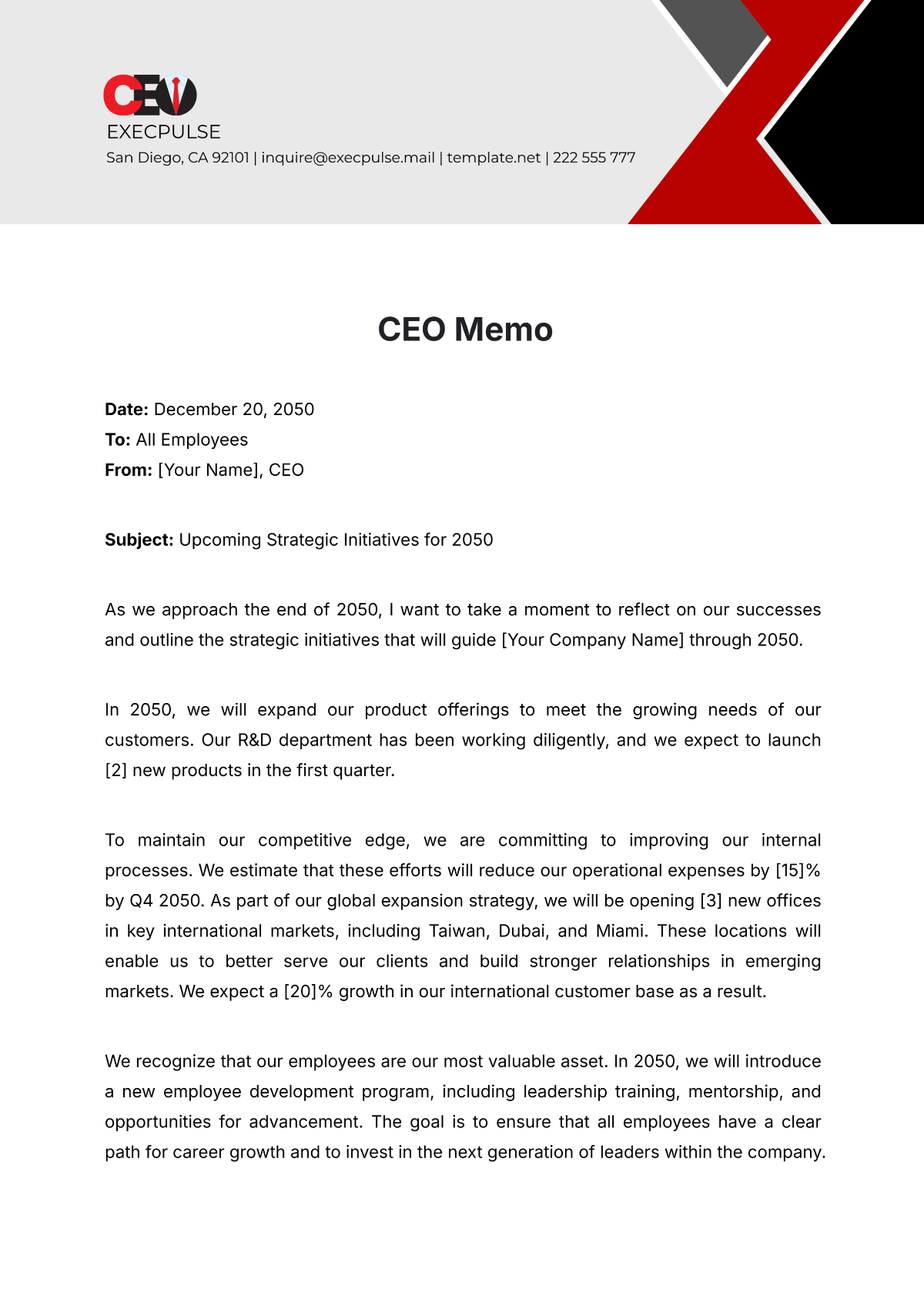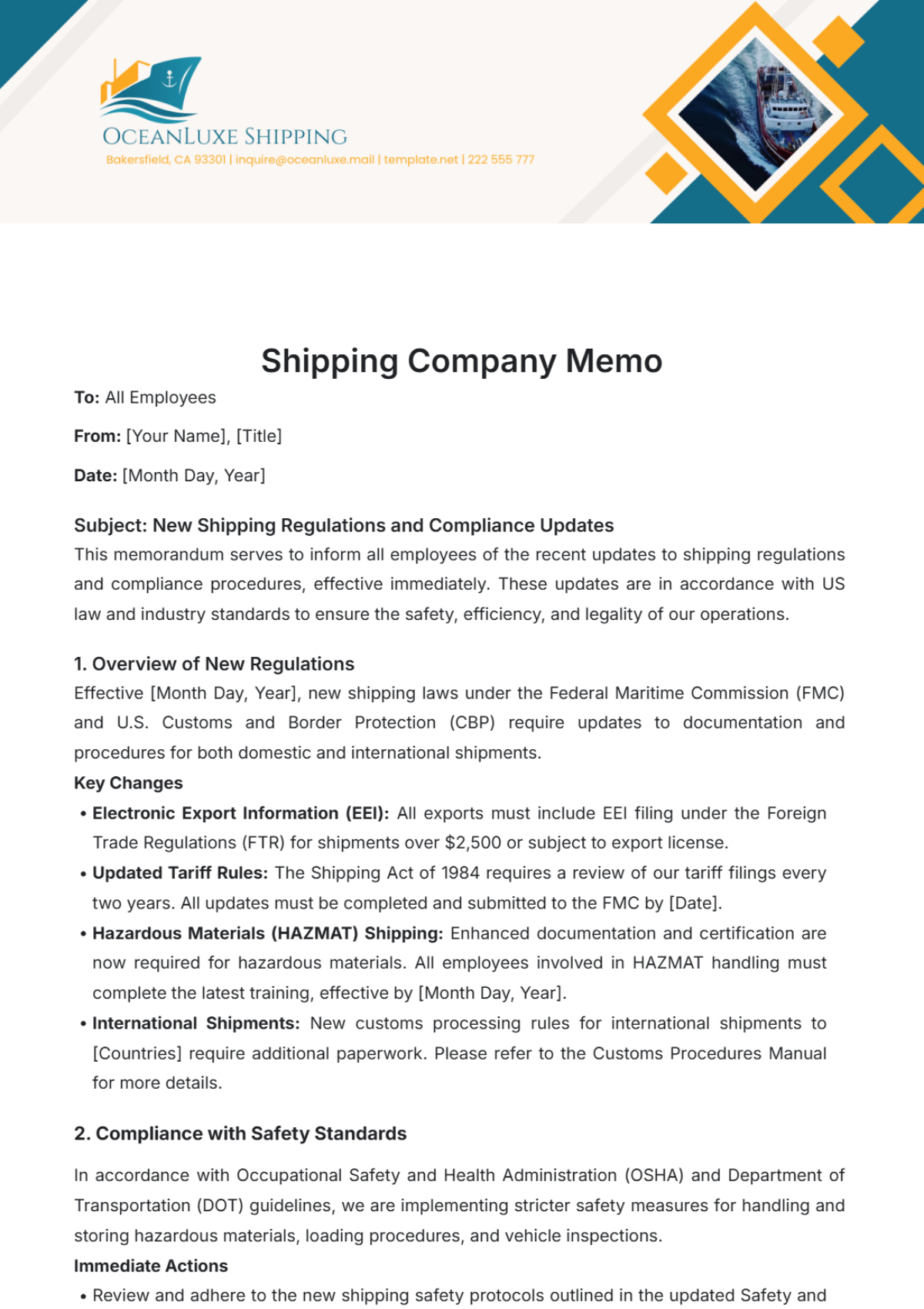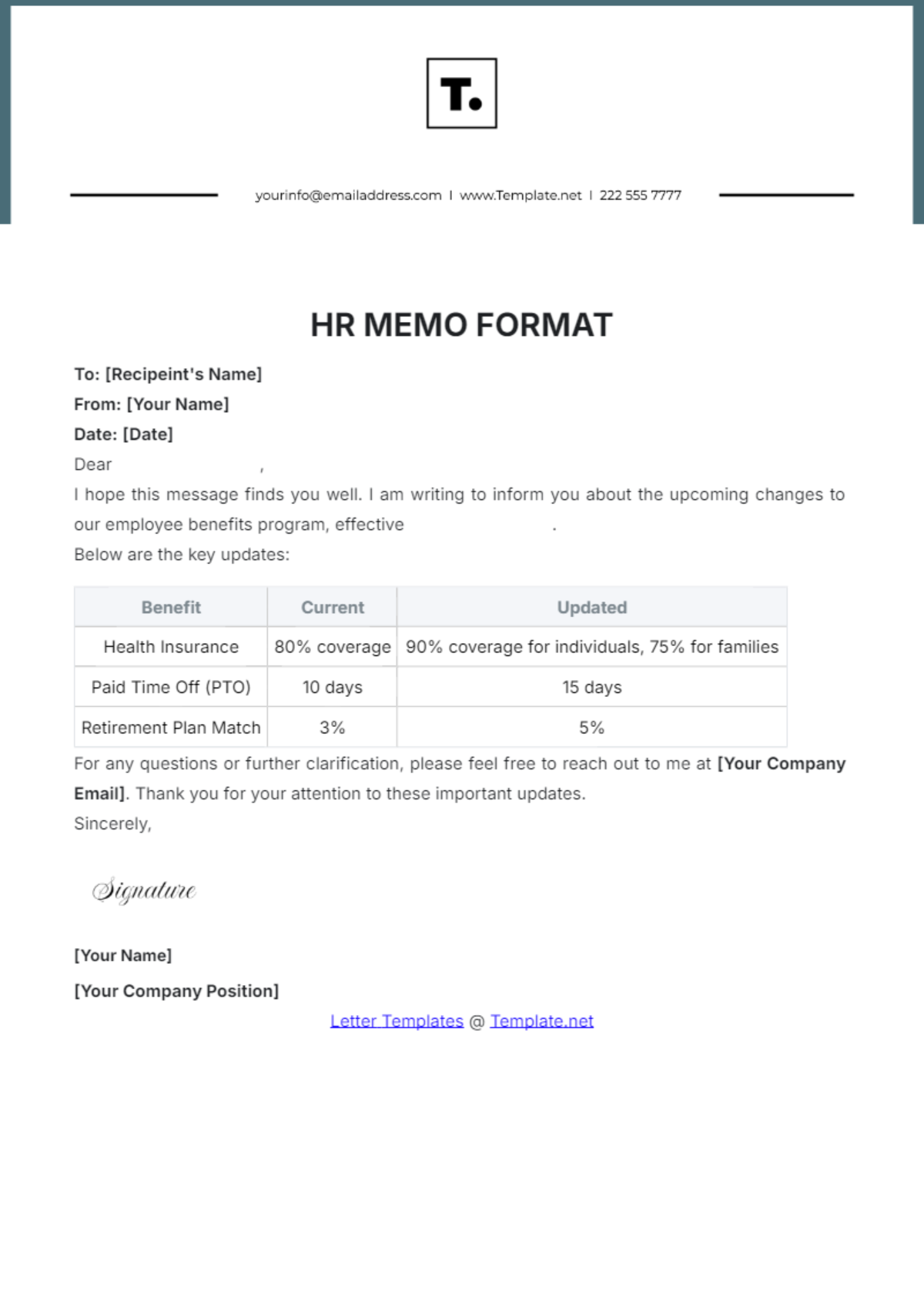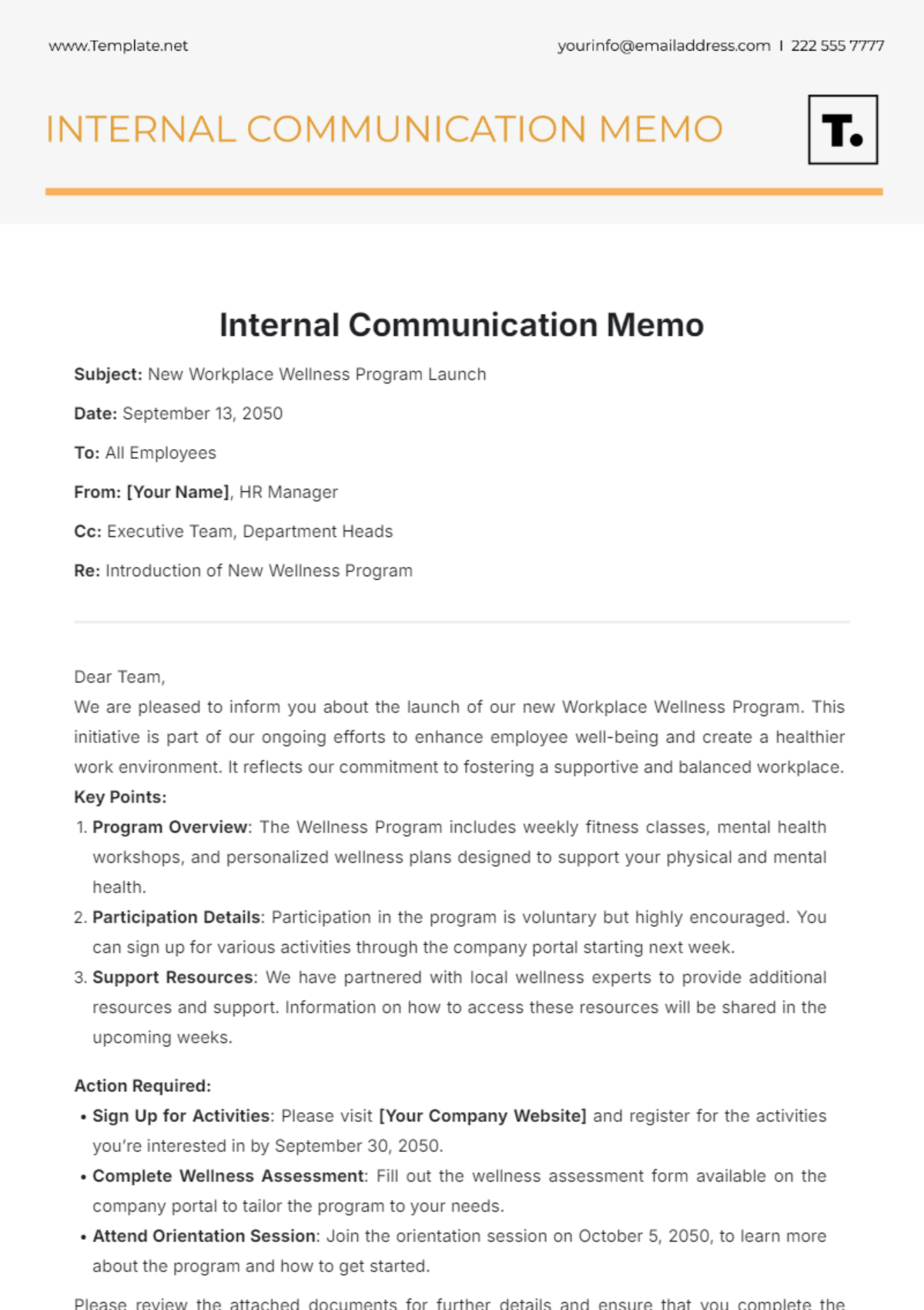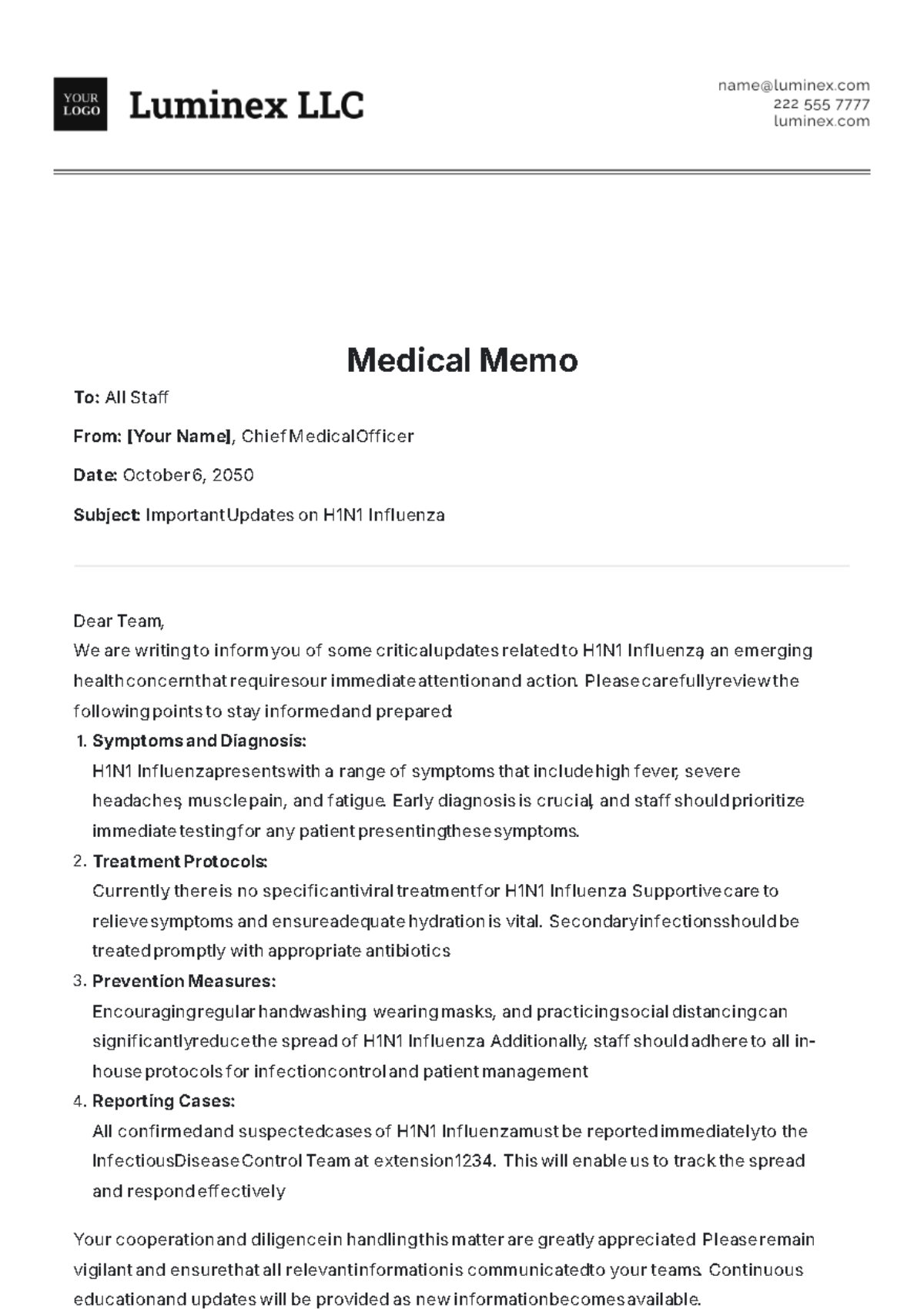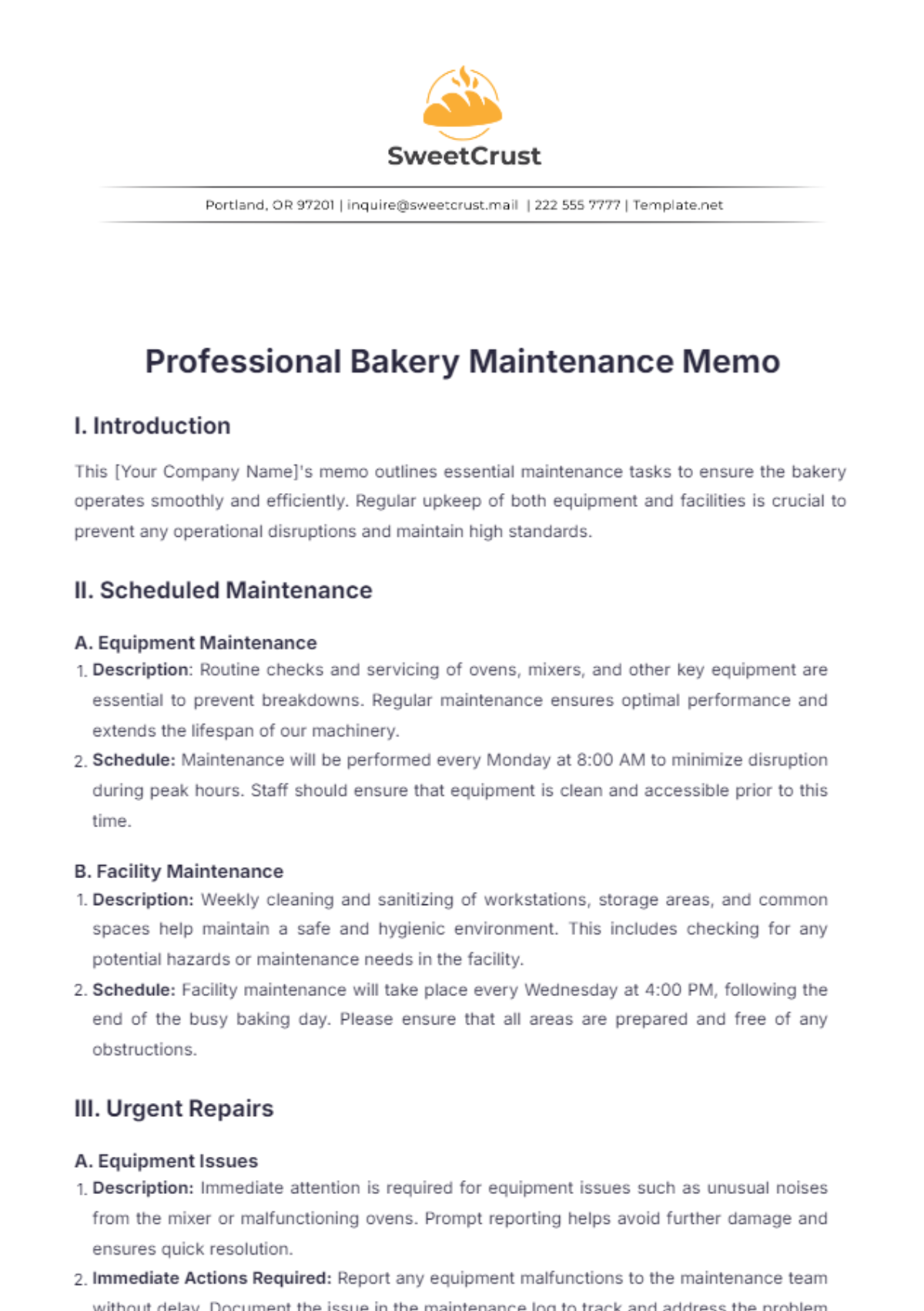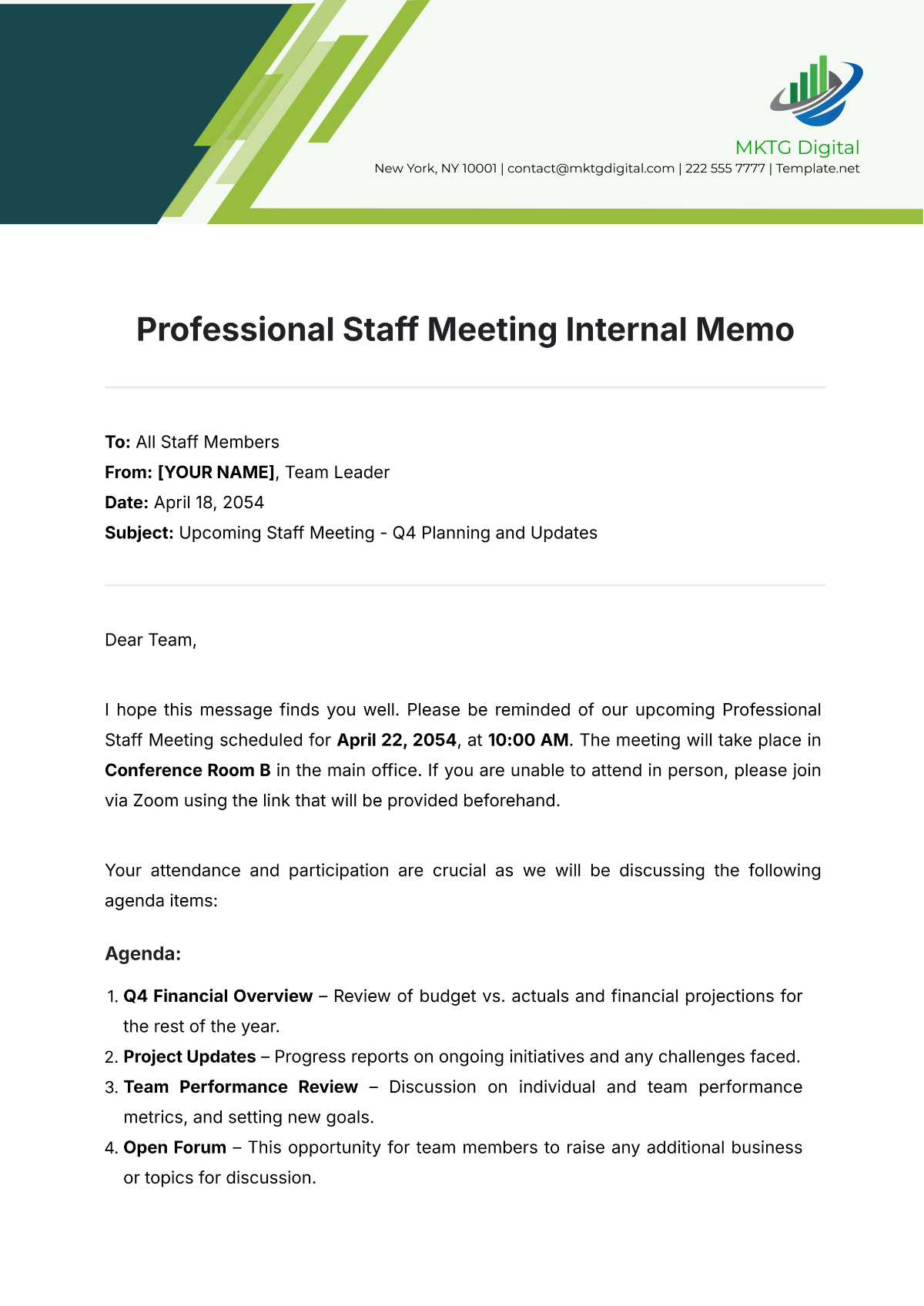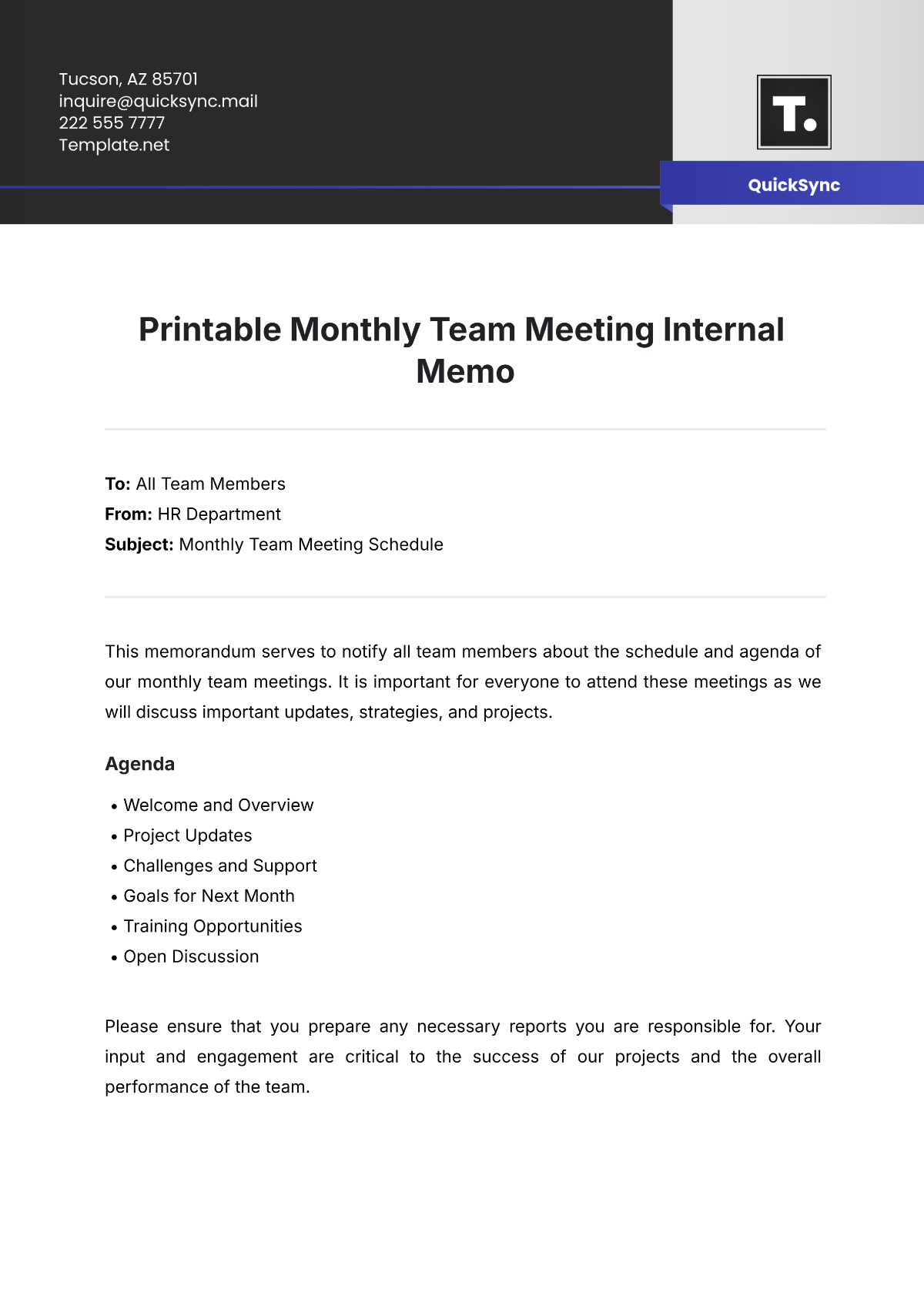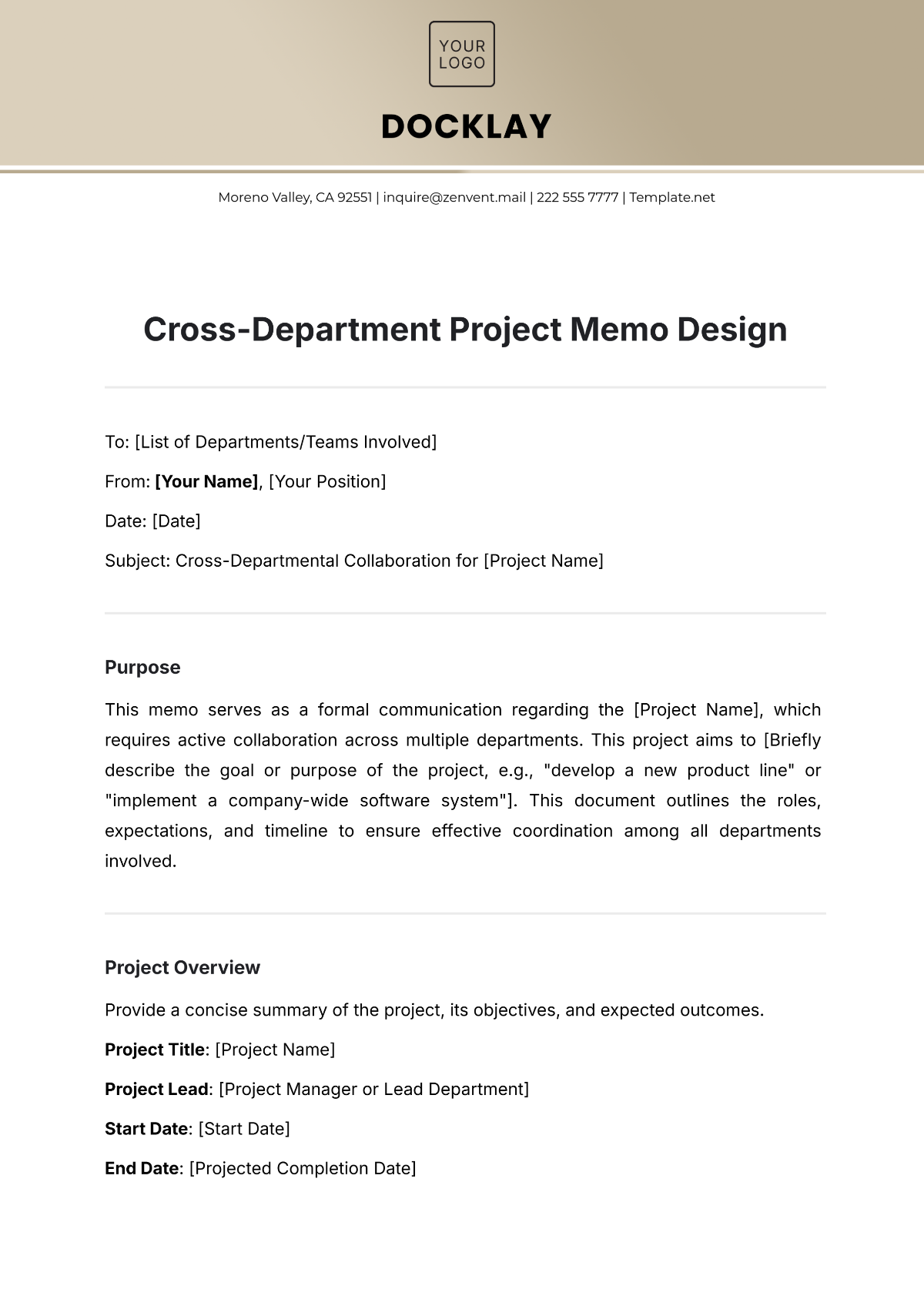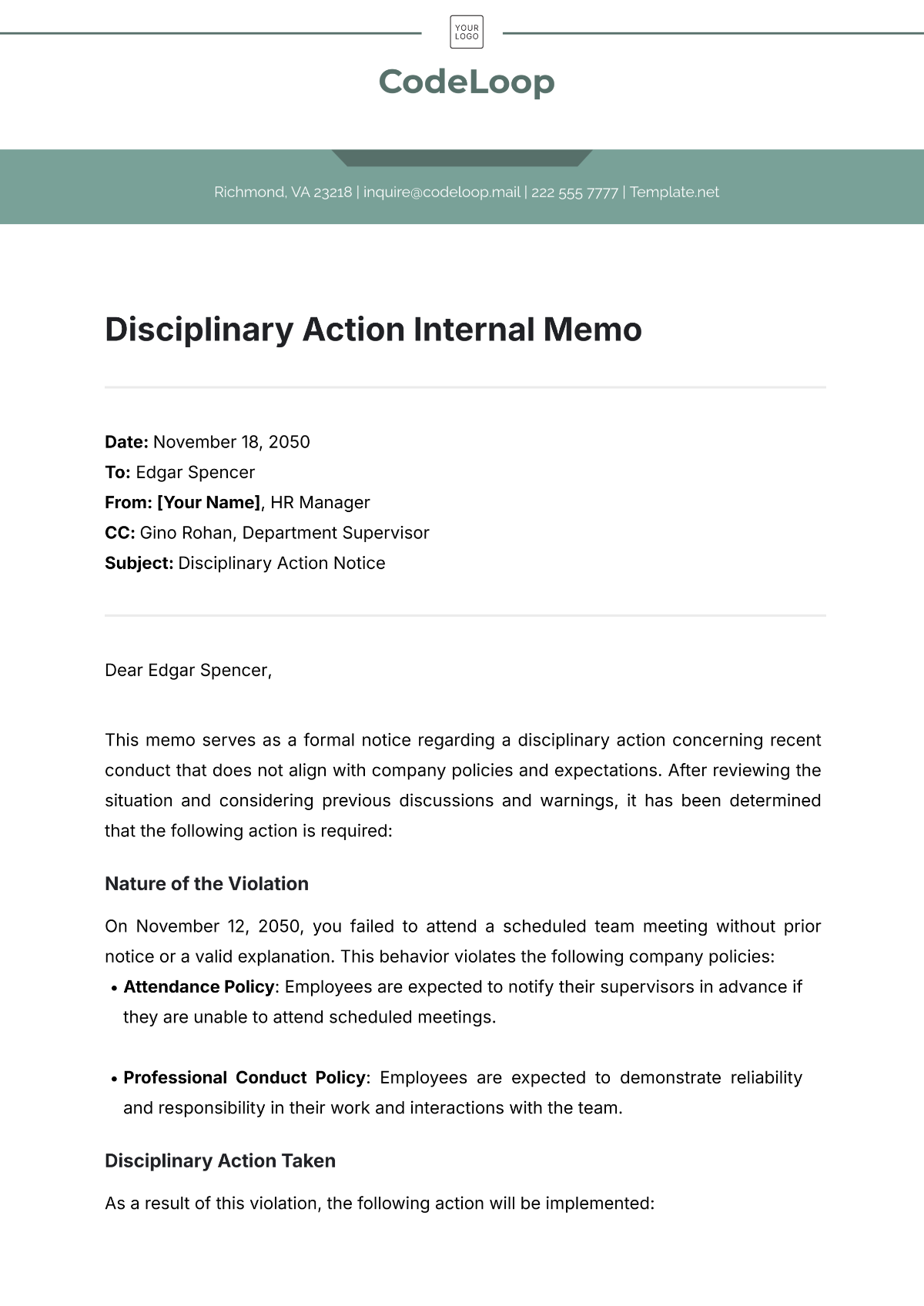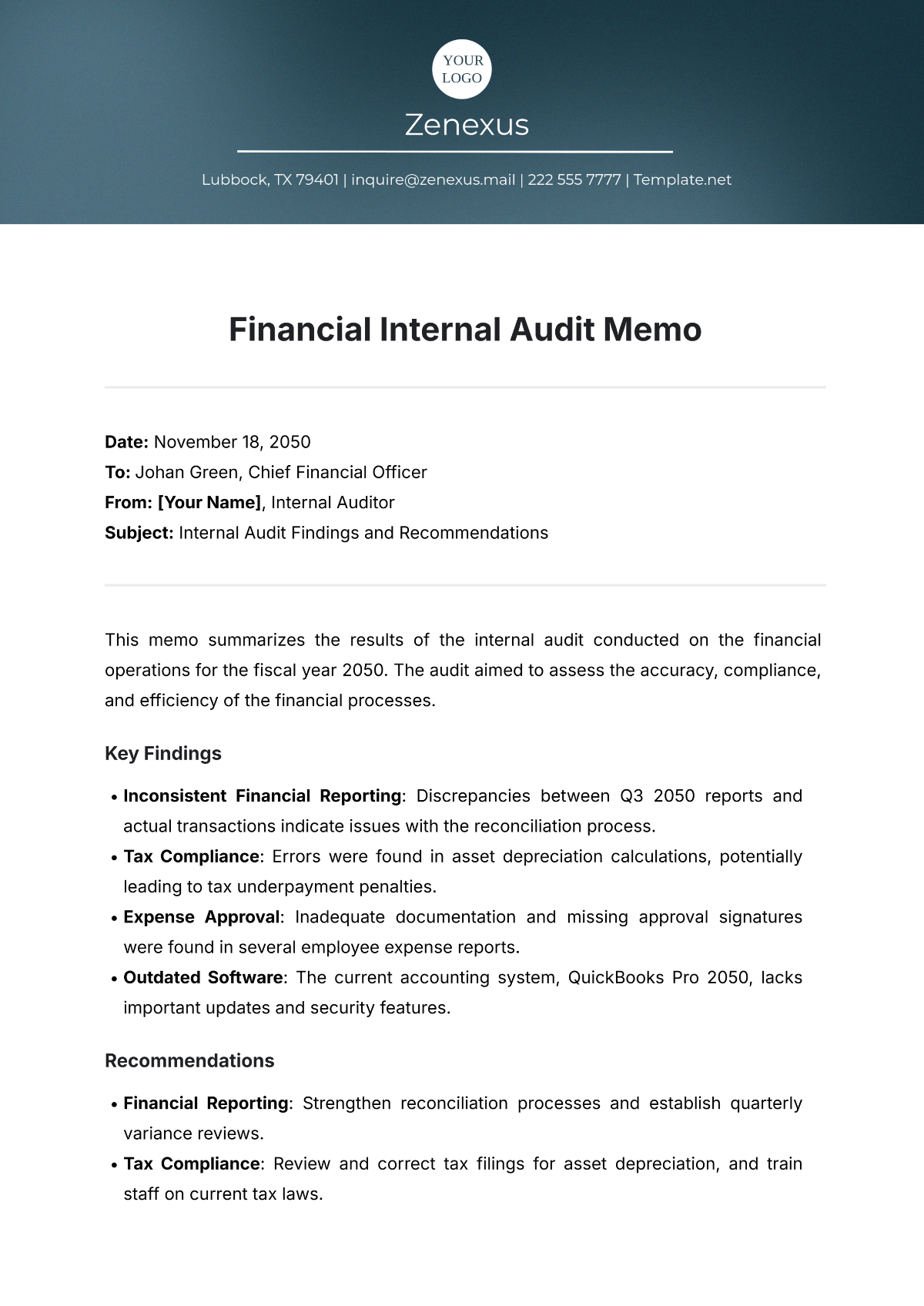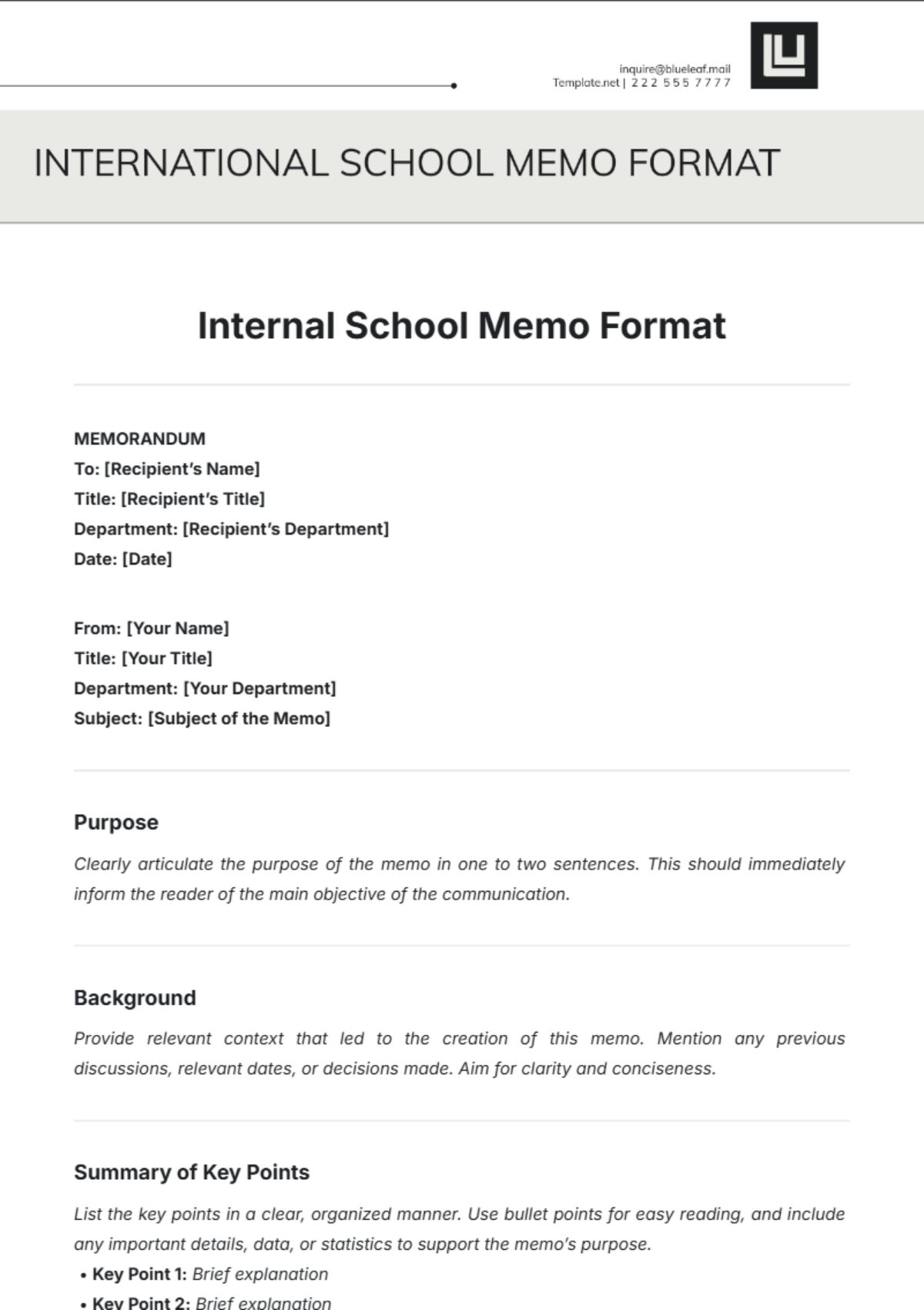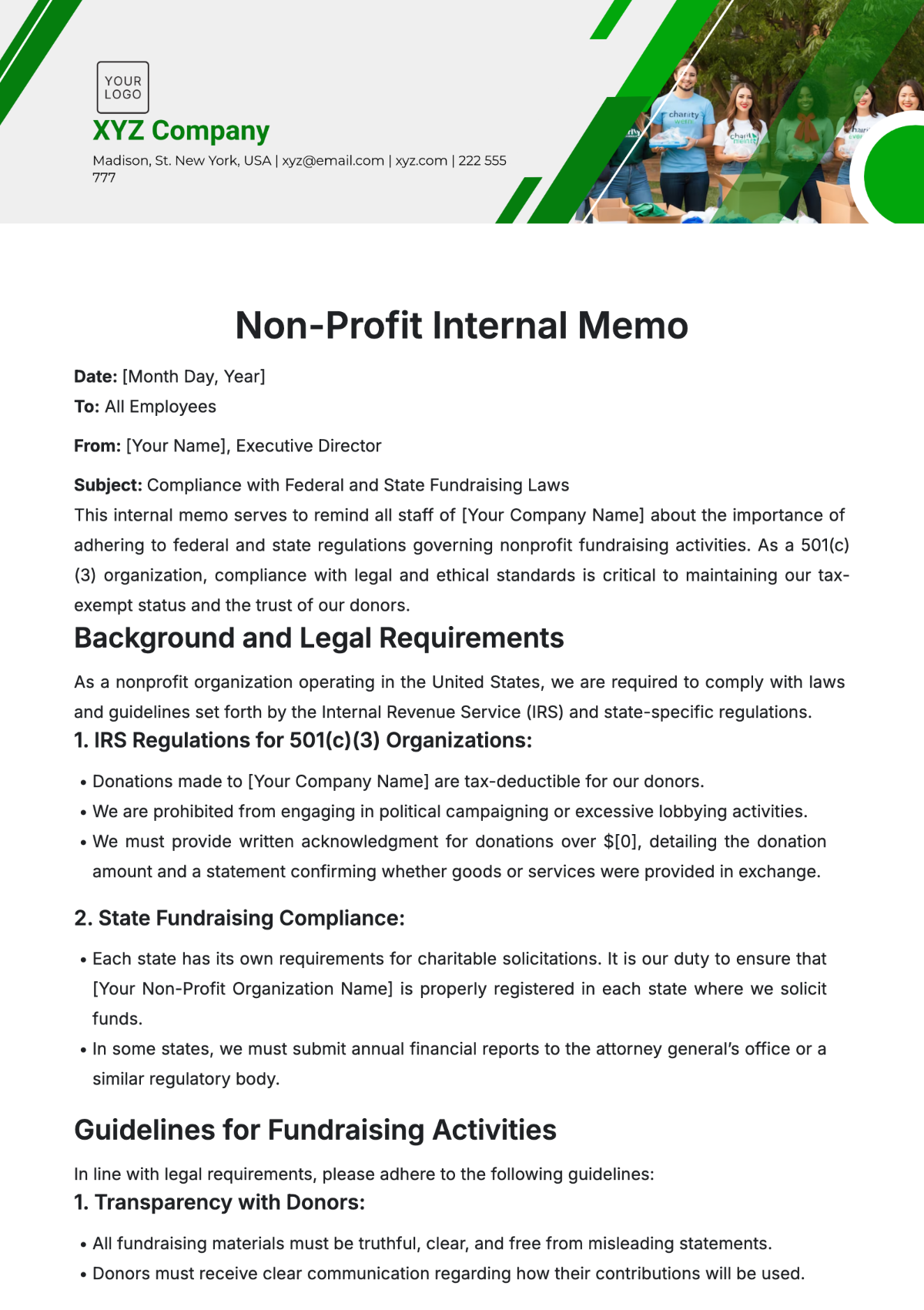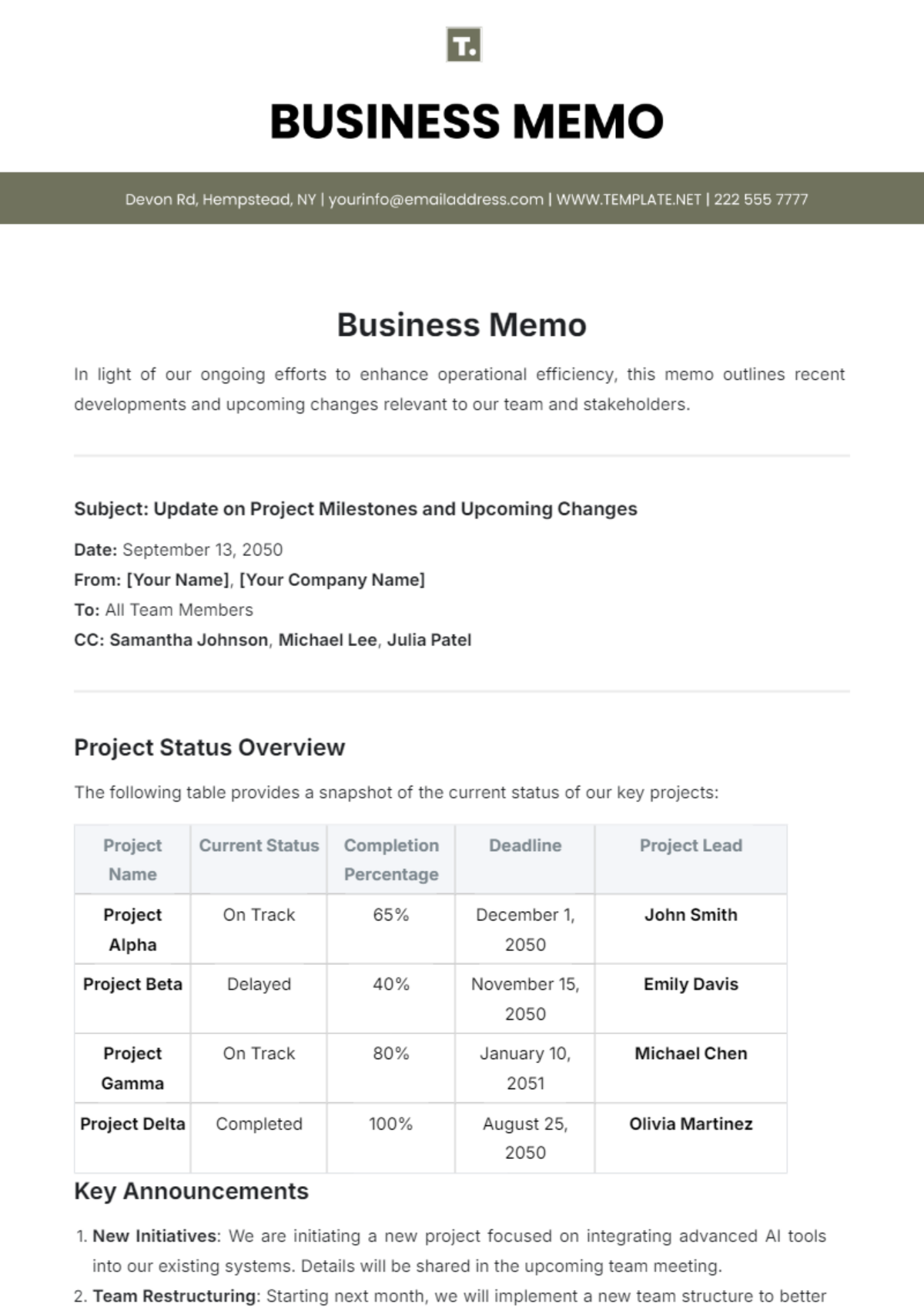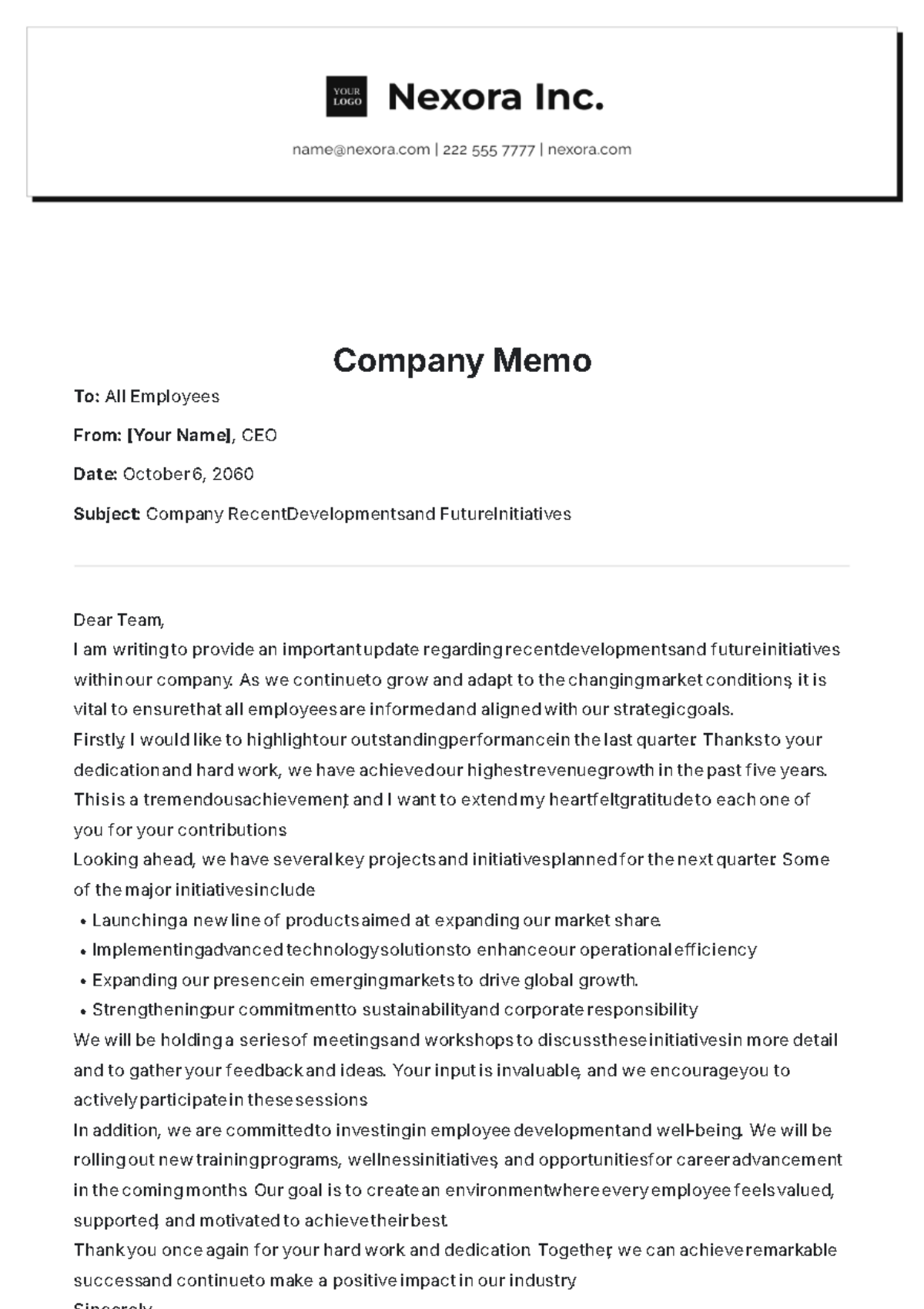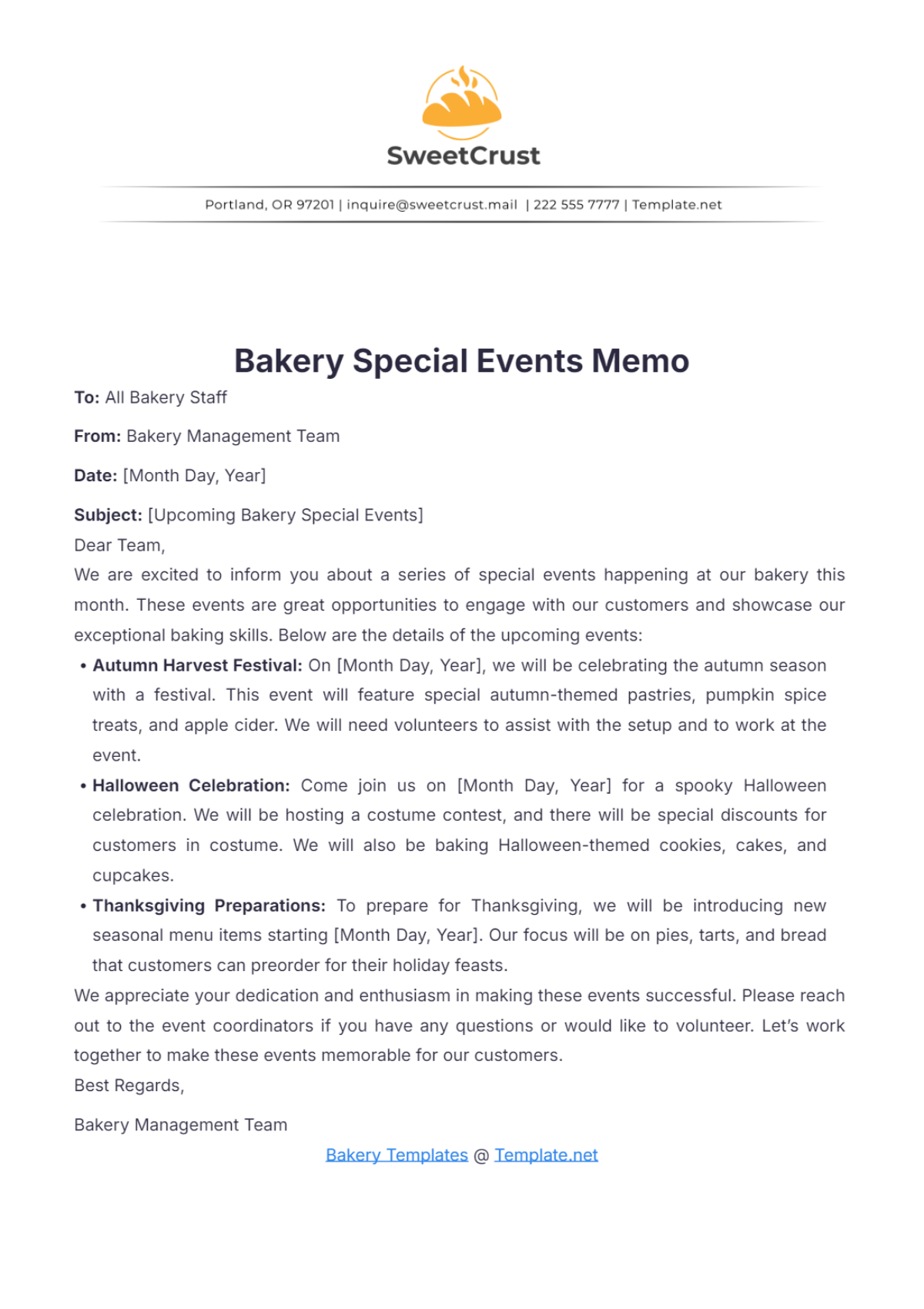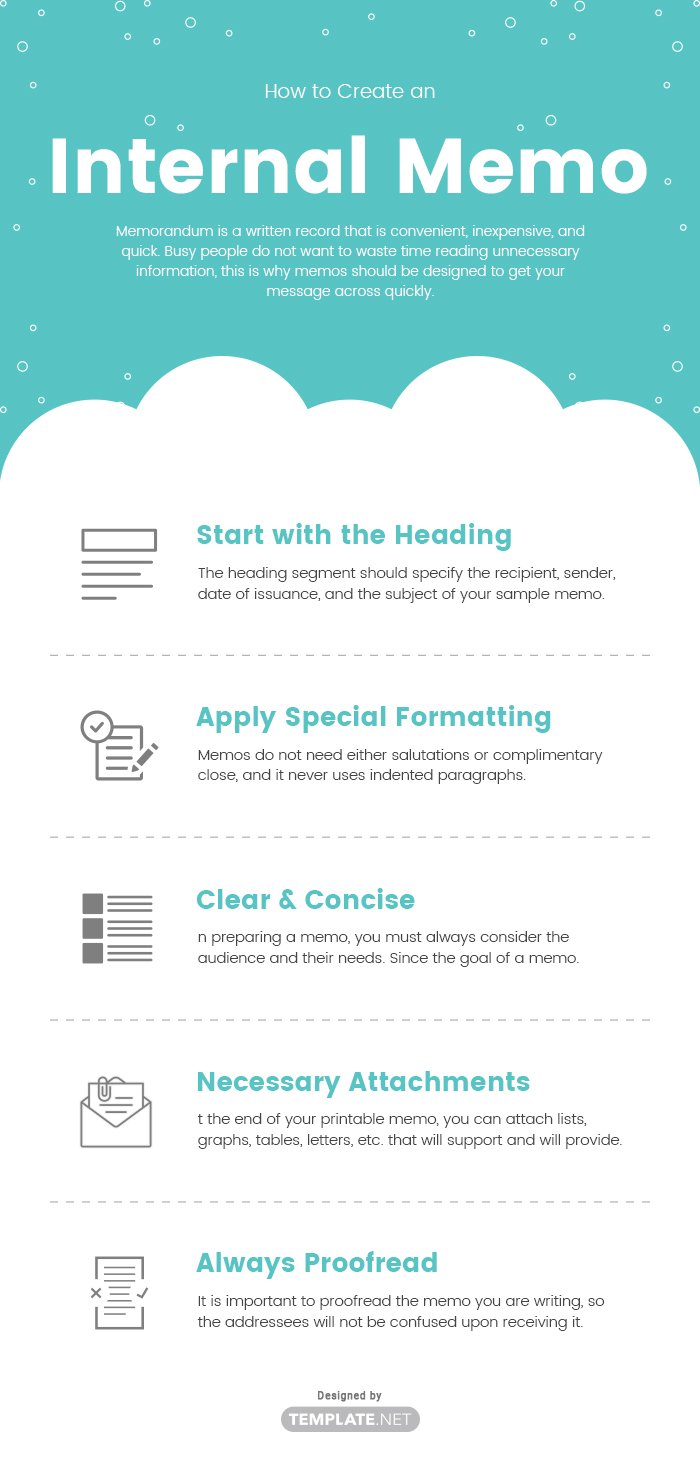Memos are a great way to communicate essential information. Memorandum is a written record that is convenient, inexpensive, and quick. Busy people do not want to waste time reading unnecessary information, this is why memos should be designed to get your message across quickly. According to a study, delivering an information through written communication is way more effective than through word of mouth. Memorandum is an example of a written communication that is mostly used in companies or offices to deliver important information to the employees. No matter what your profession is, you should know how simple memos work and how it should be made. Here are some tips that may help you in creating an internal memo.
1. Start with the Heading
The heading segment should specify the recipient, sender, date of issuance, and the subject of your sample memo. There are two options in addressing the recipient of your memo—you can use either "to" or "for." Note that "to" is used if the addressee has a lower position than the one who is writing. Meanwhile, "for" is used for the addressee who has a higher position than the one who wrote the memo.
2. Apply Special Formatting
Memos do not need either salutations or complimentary close, and it never uses indented paragraphs. In making your internal memorandum, make use of printed letters and center the alignment in emphasizing an important detail. You can also use graphic organizers to make reading and understanding of data analysis easier. In showing natural breaks, use underlines and side headings. Use color coding to attract attention and bullets to emphasize several points. You can also use boldface and italics when appropriate.
3. Content Should Be Clear and Concise
In preparing a memo, you must always consider the audience and their needs. Since the goal of a memo is to deliver the message quickly, then you should not write complicated and hard-to-understand memos. Never leave out necessary details causing the readers to have follow-up questions. A memo is a business document, therefore, you should use a professional and formal tone. Lastly, it should have an objective tone without personal bias, preference, or interest on display.
4. Necessary Attachments
At the end of your printable memo, you can attach lists, graphs, tables, letters, etc. that will support and will provide information to the reader if necessary. Just be sure to refer to your attachments in your memo and add a notation about what is attached at the bottom part, right below the closing.
5. Always Proofread
It is important to proofread the memo you are writing, so the addressees will not be confused upon receiving it. A memo full of typos and grammatical errors is a poor reflection to the writer. The writer must not write a thoughtless memo and must also observe courteousness in his/her words. A poorly written memo could confuse the readers, offend employees, and create a loss of time.
